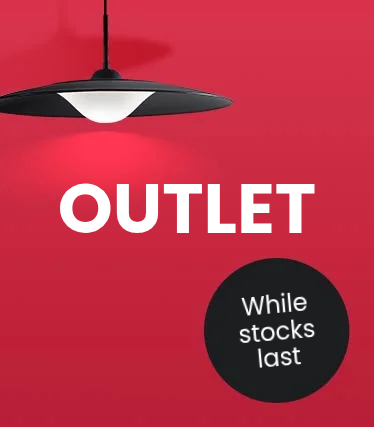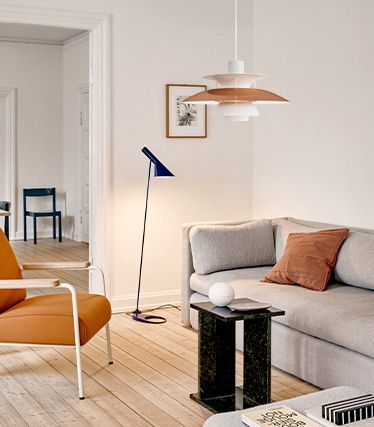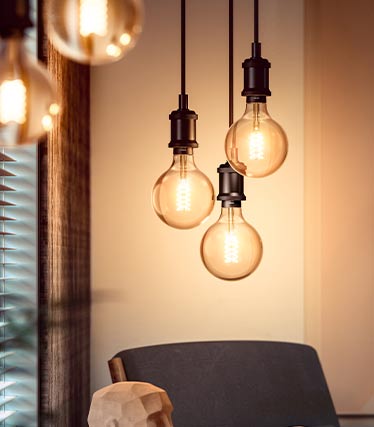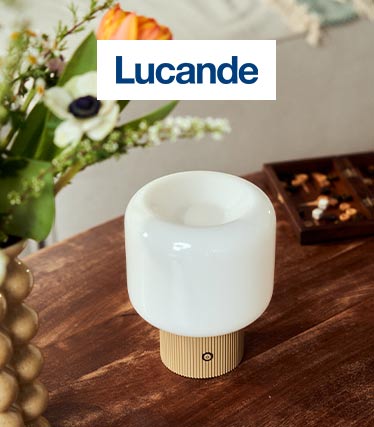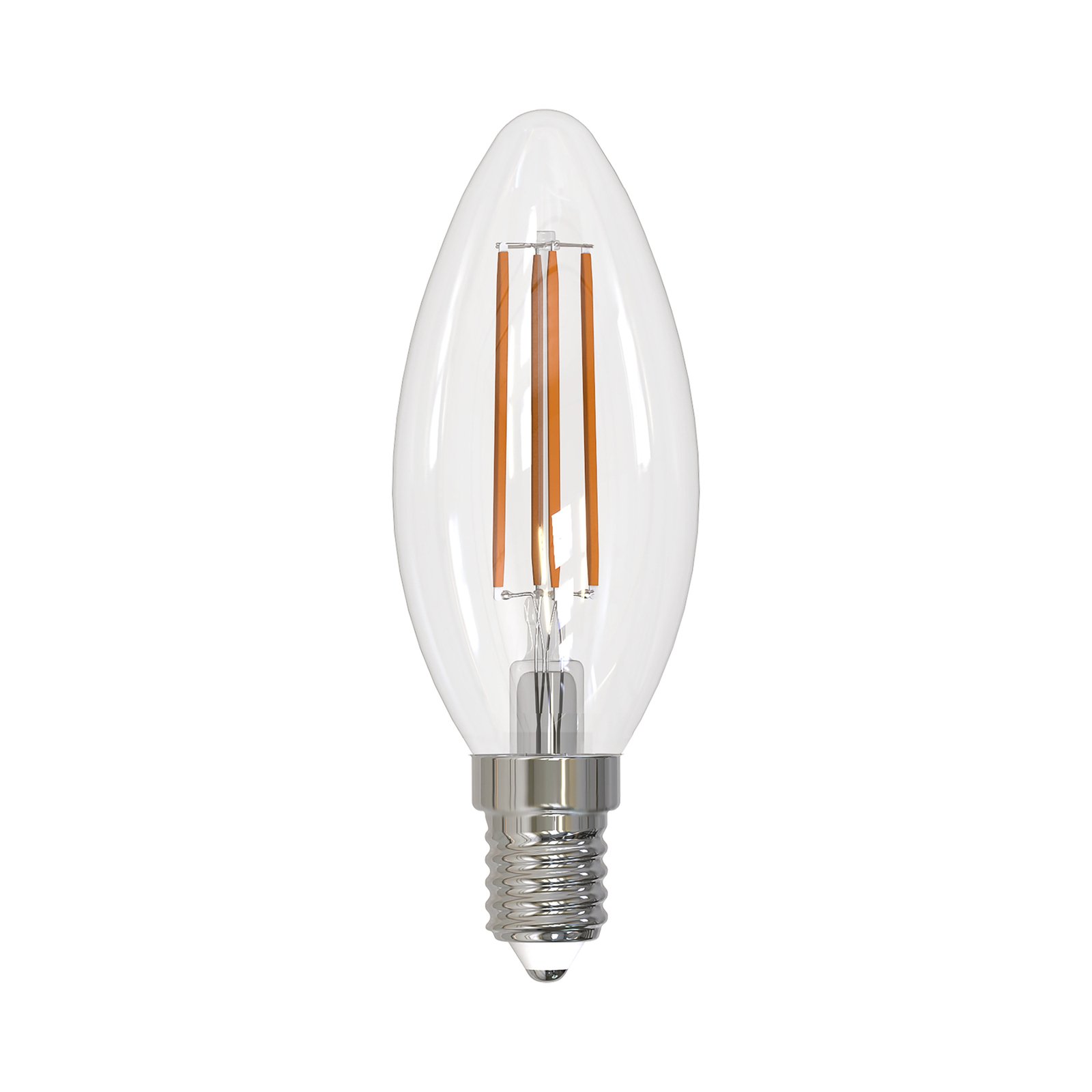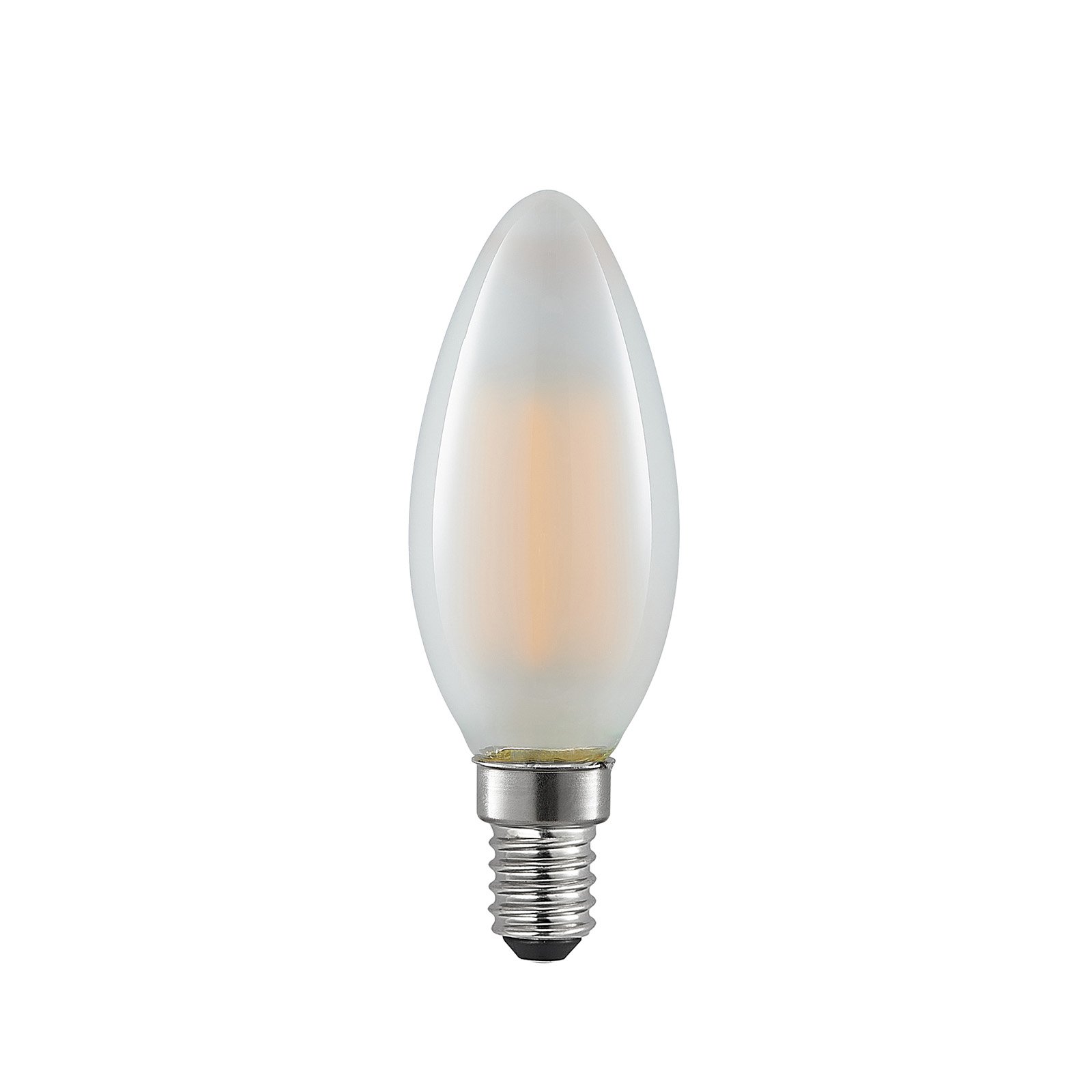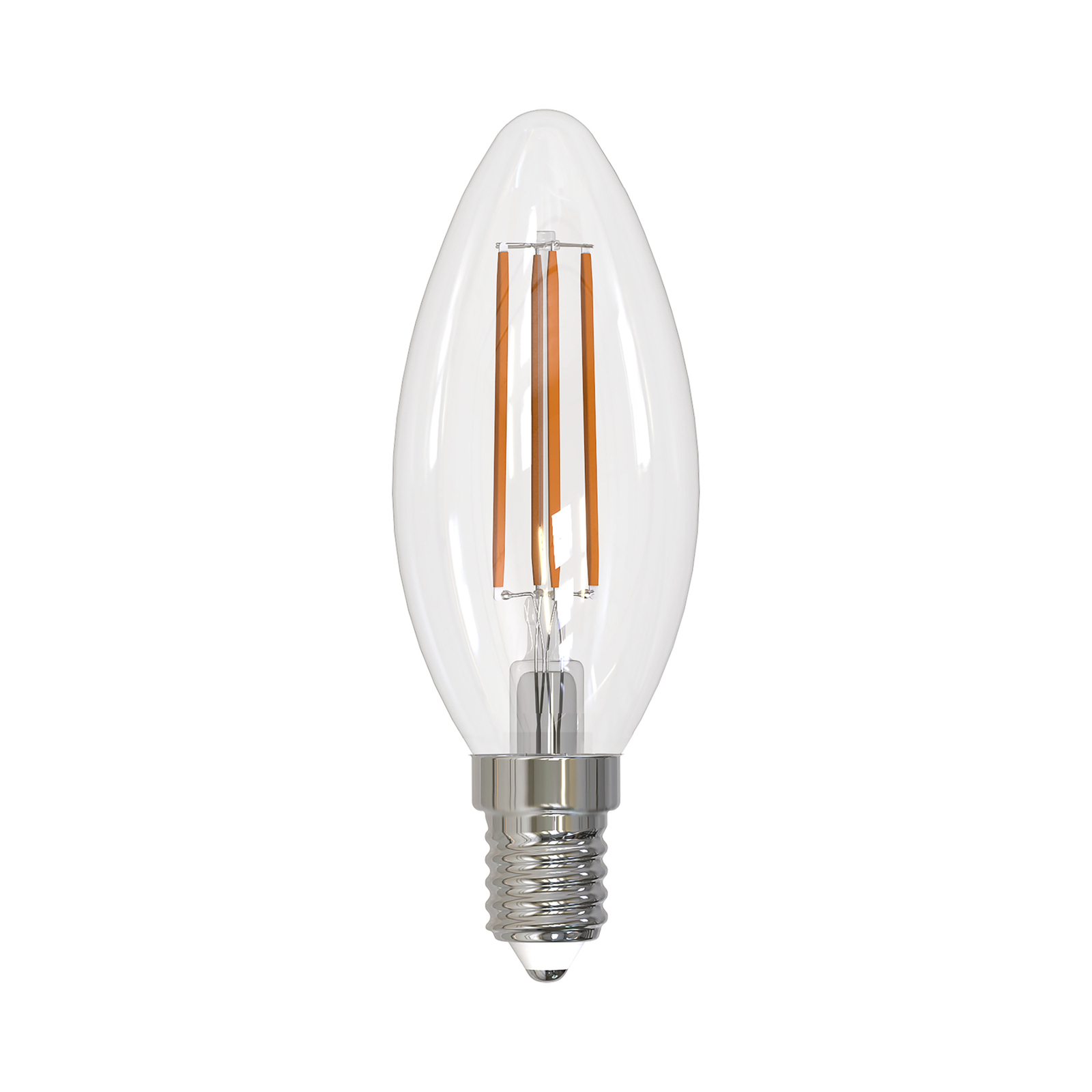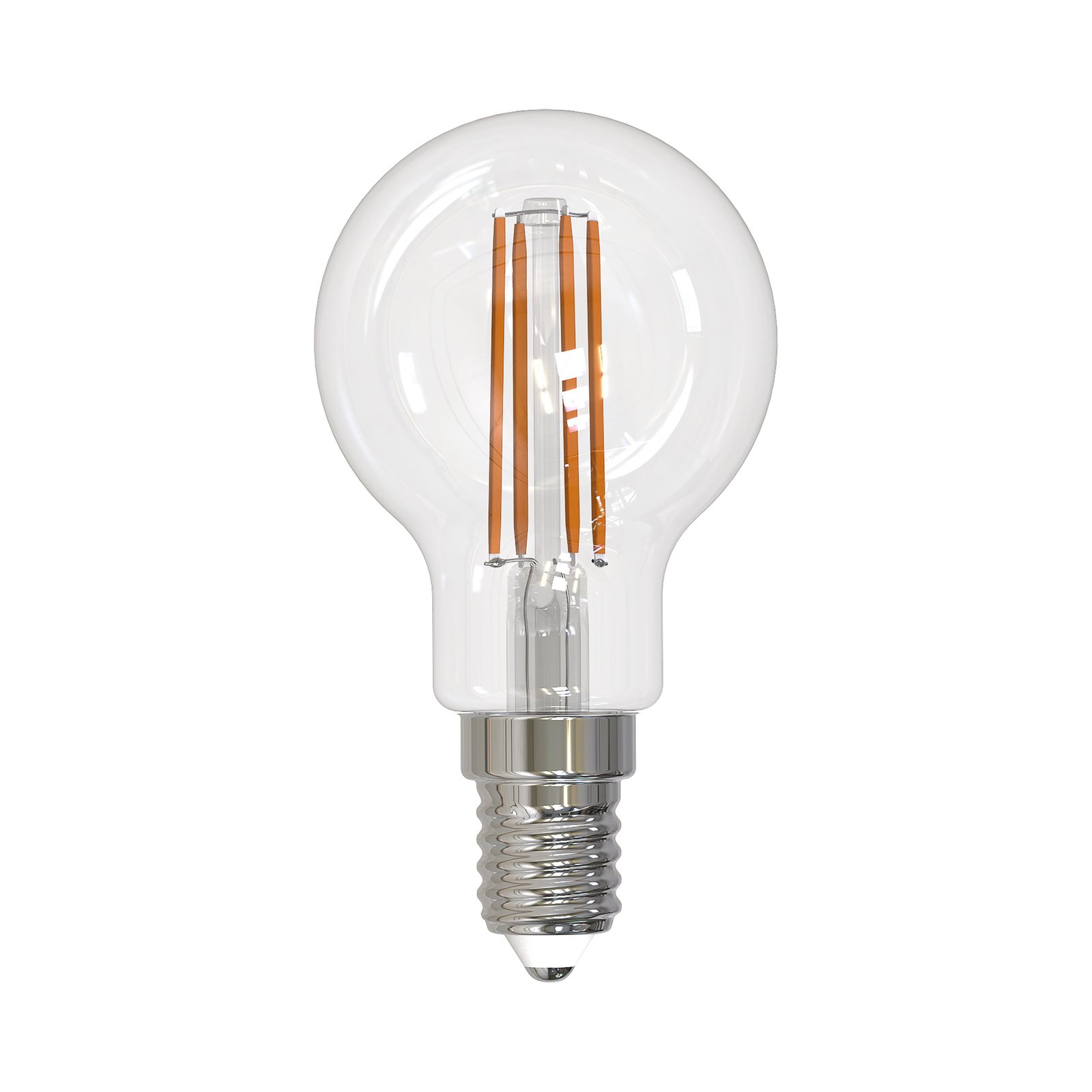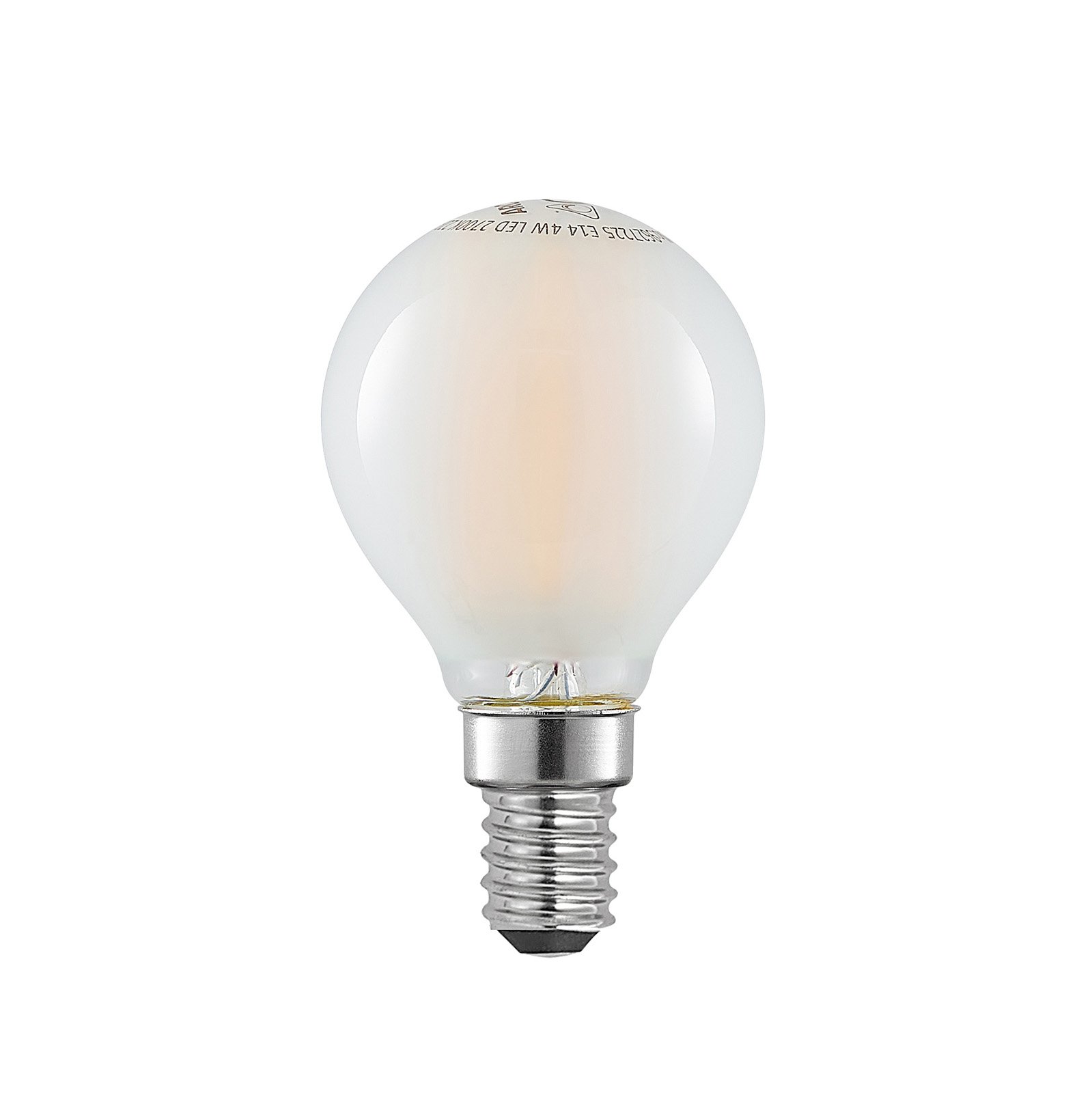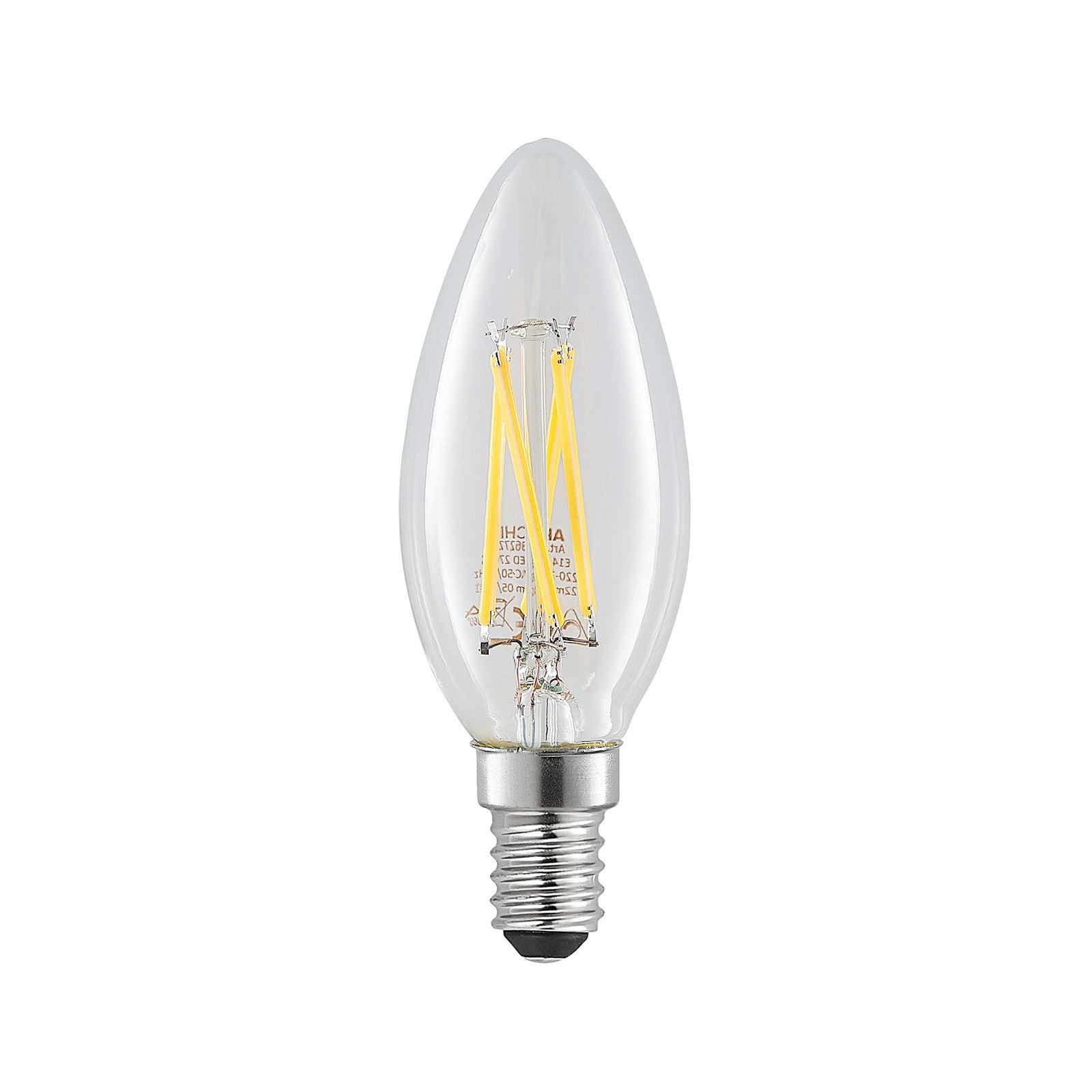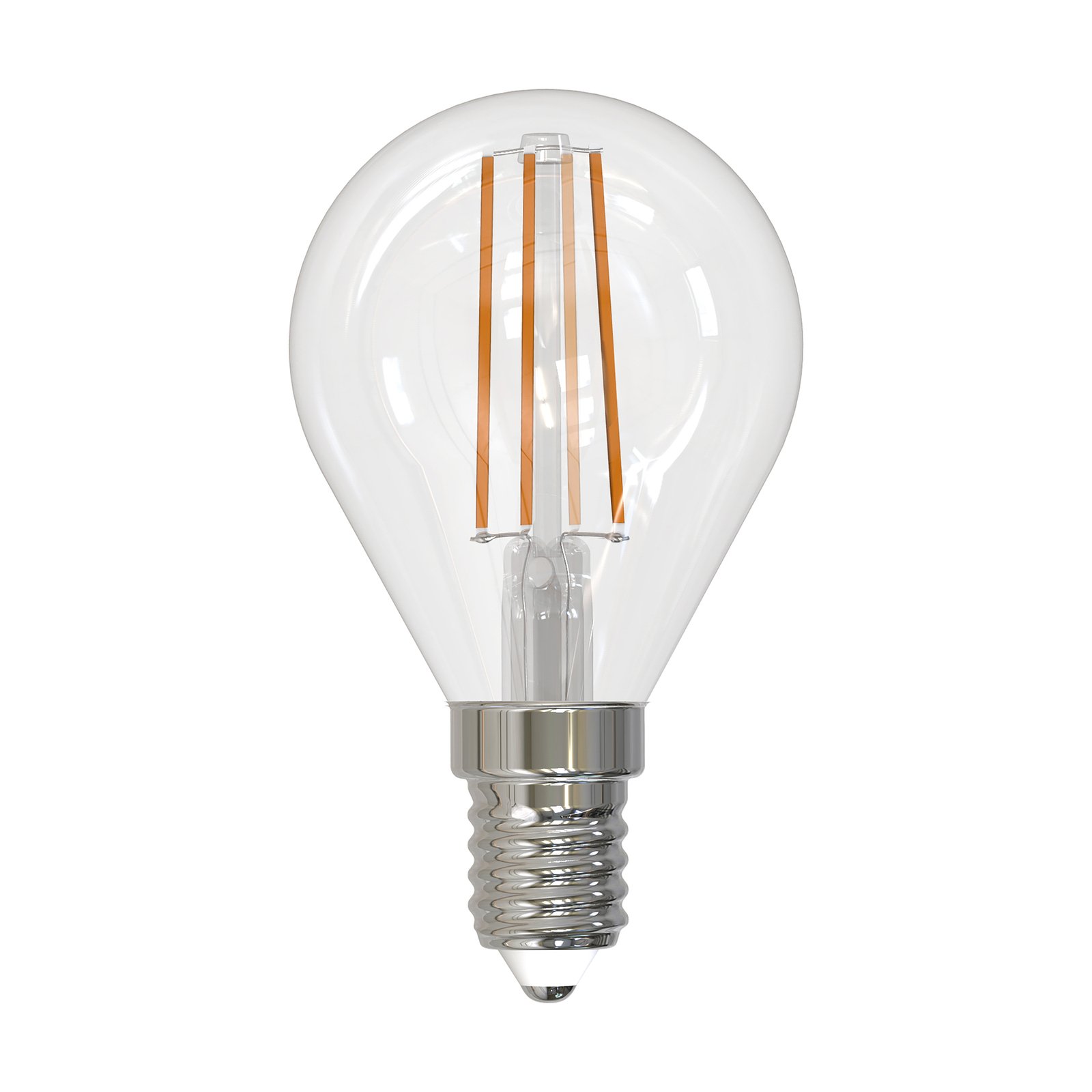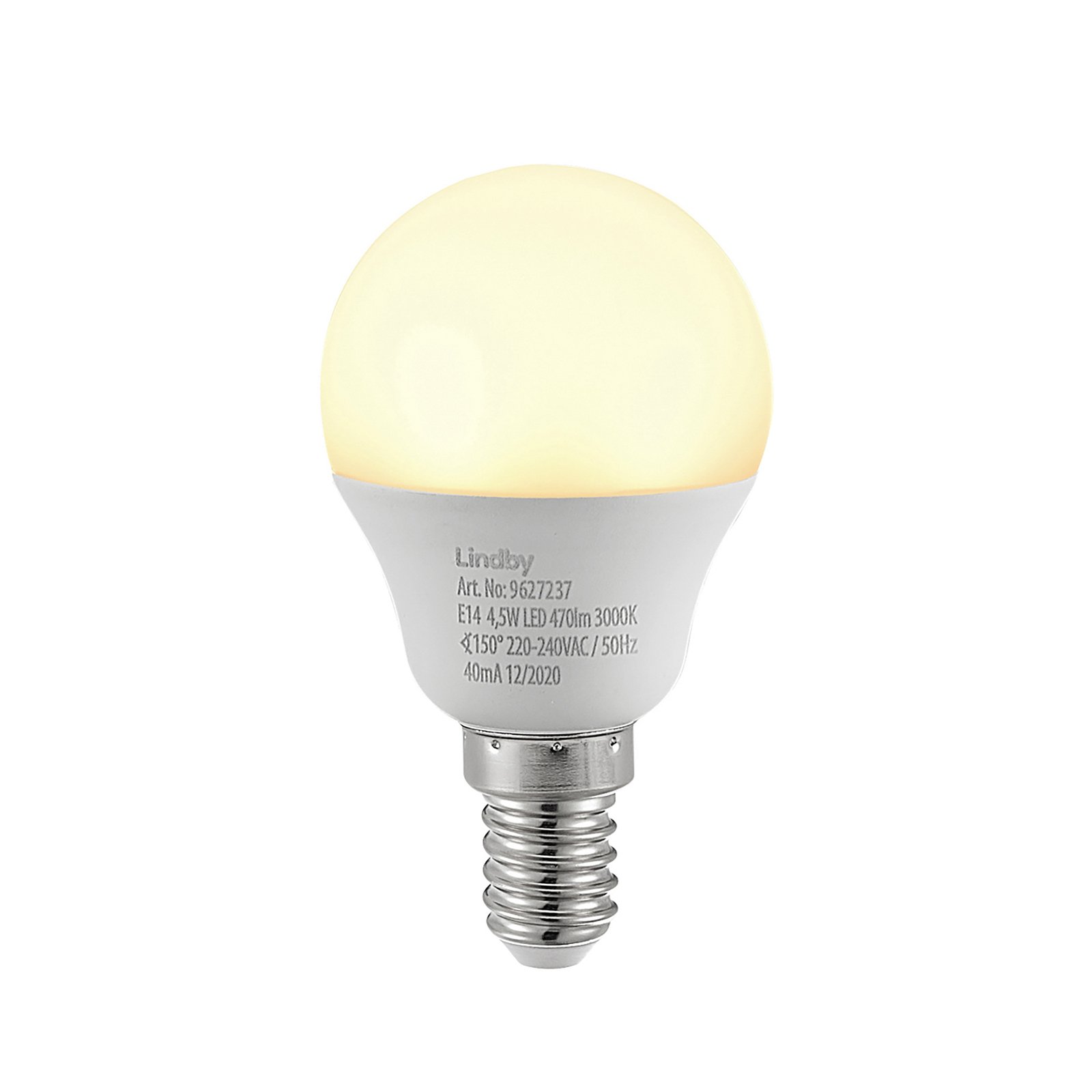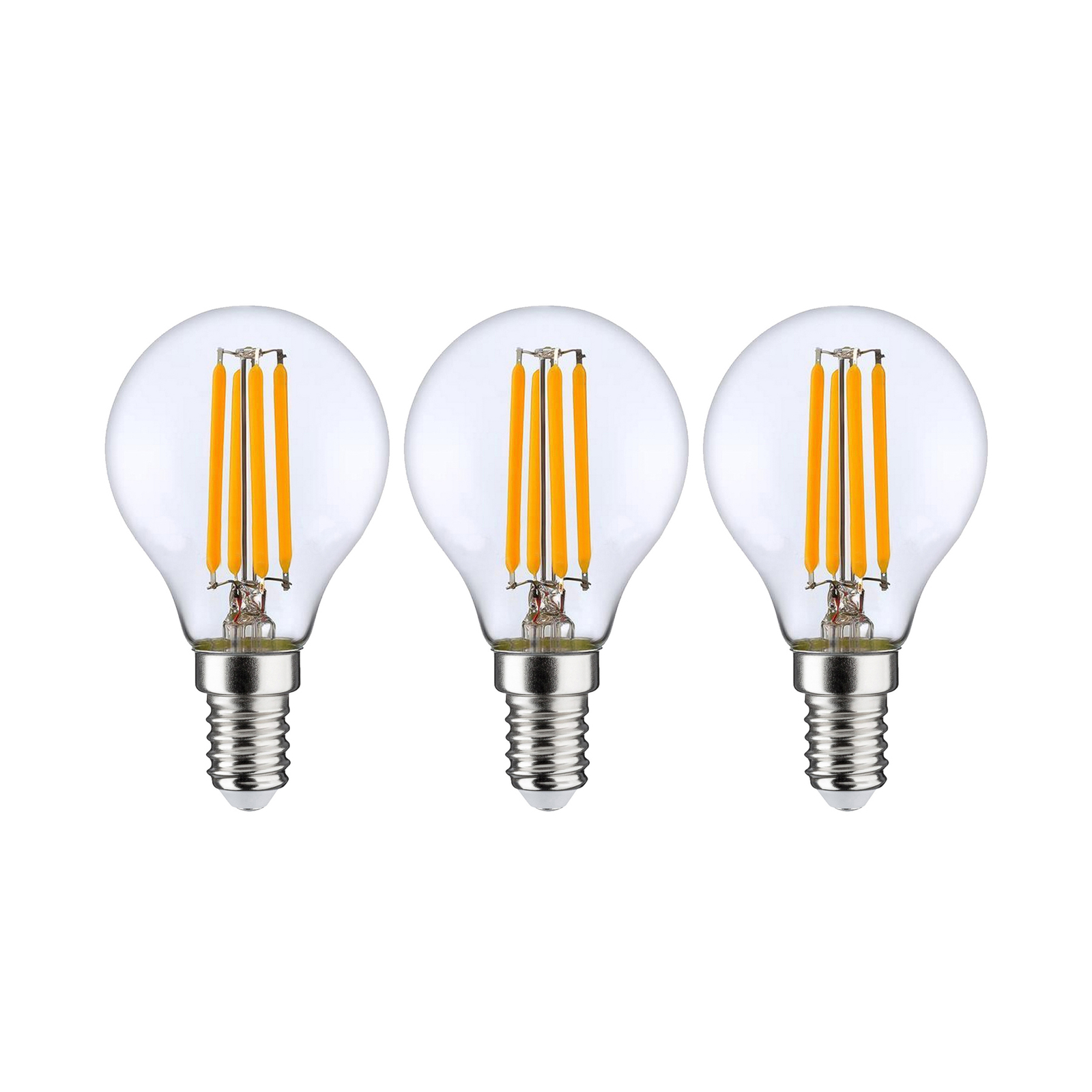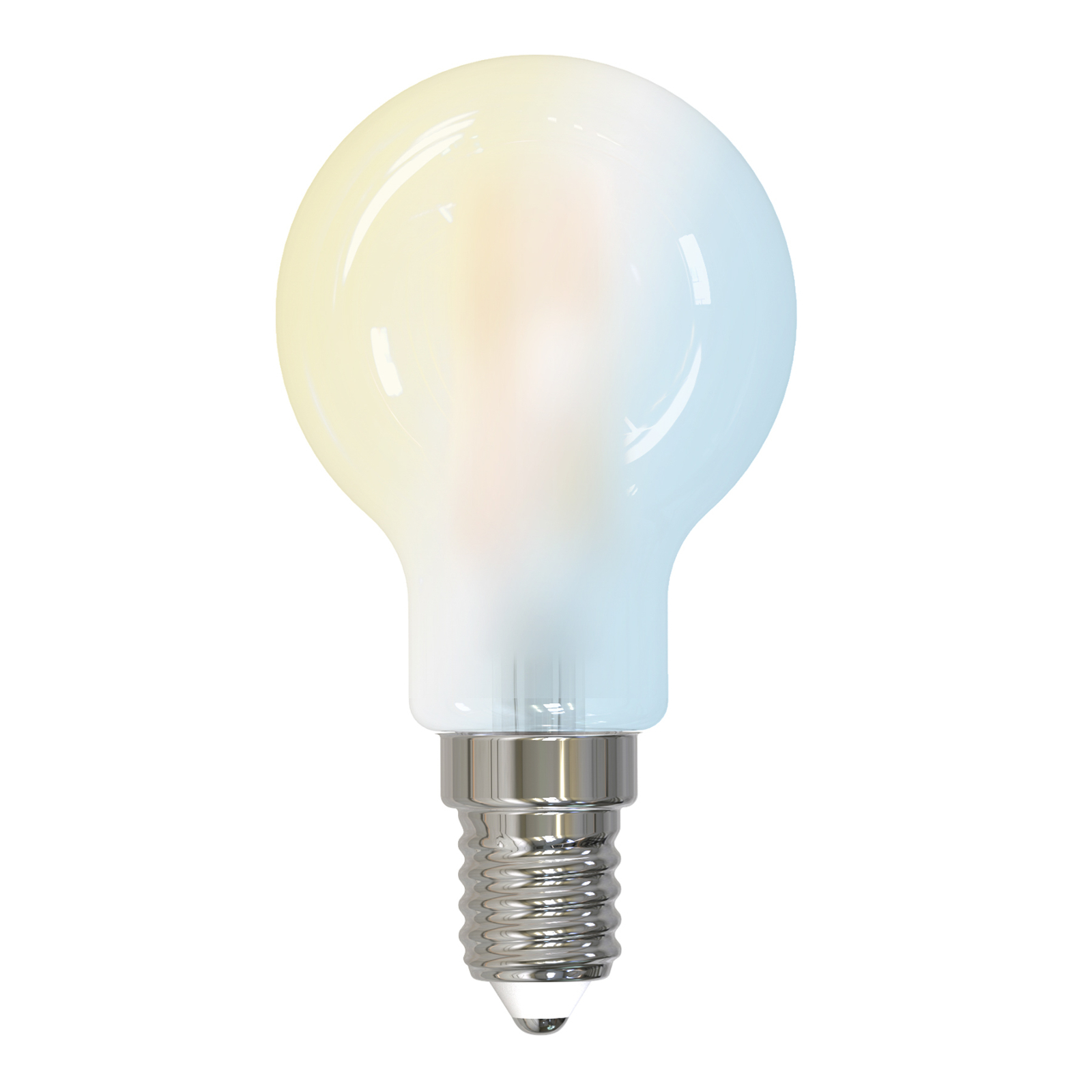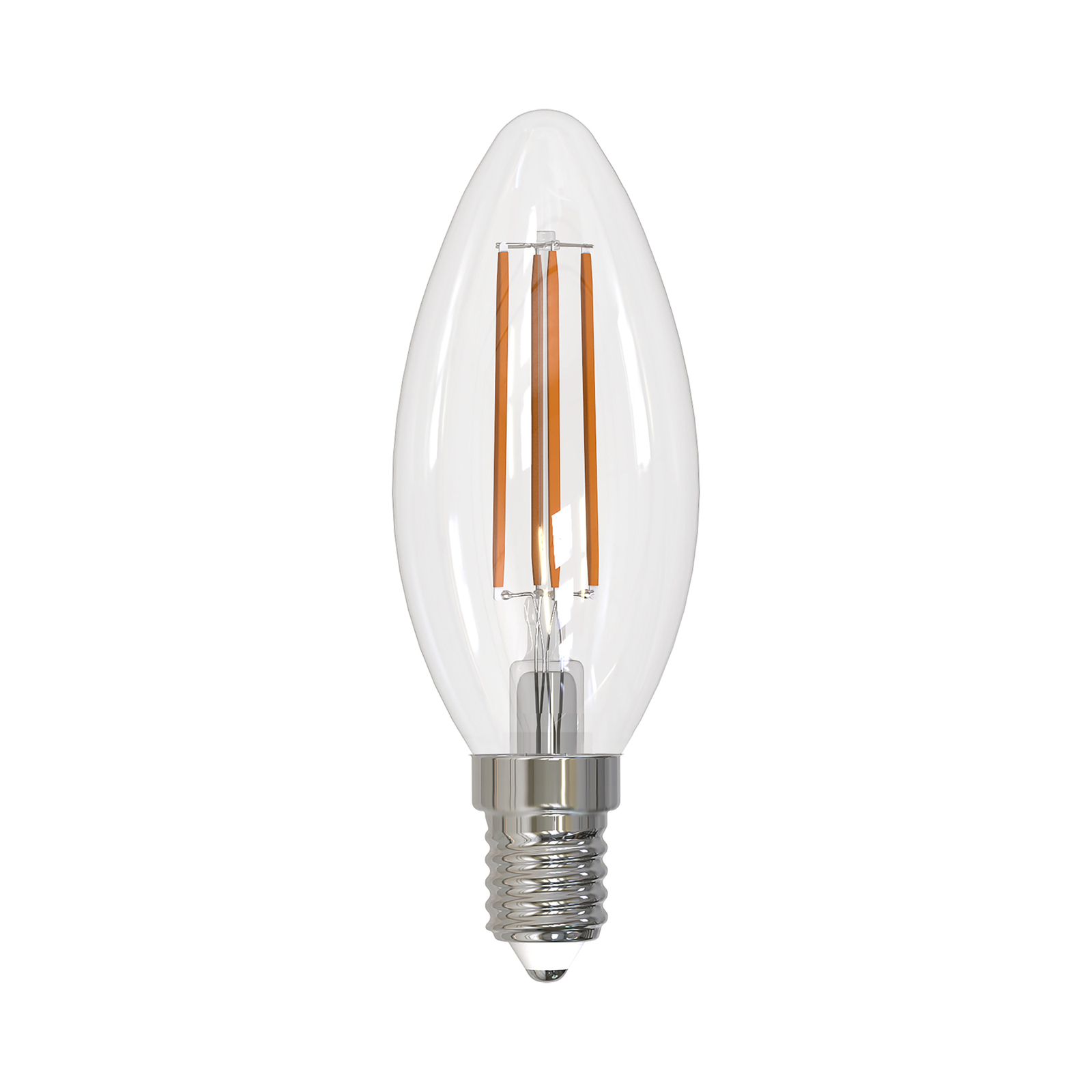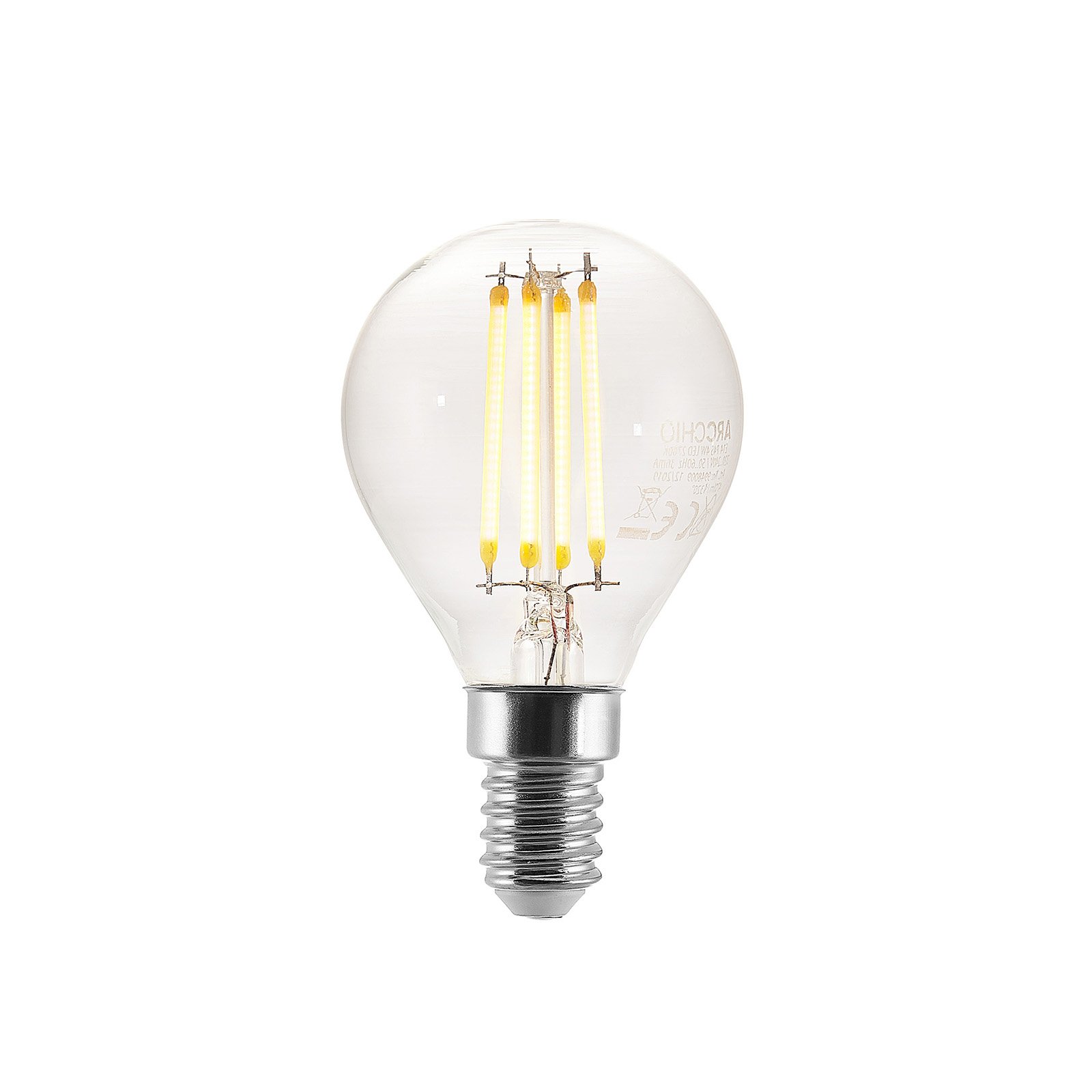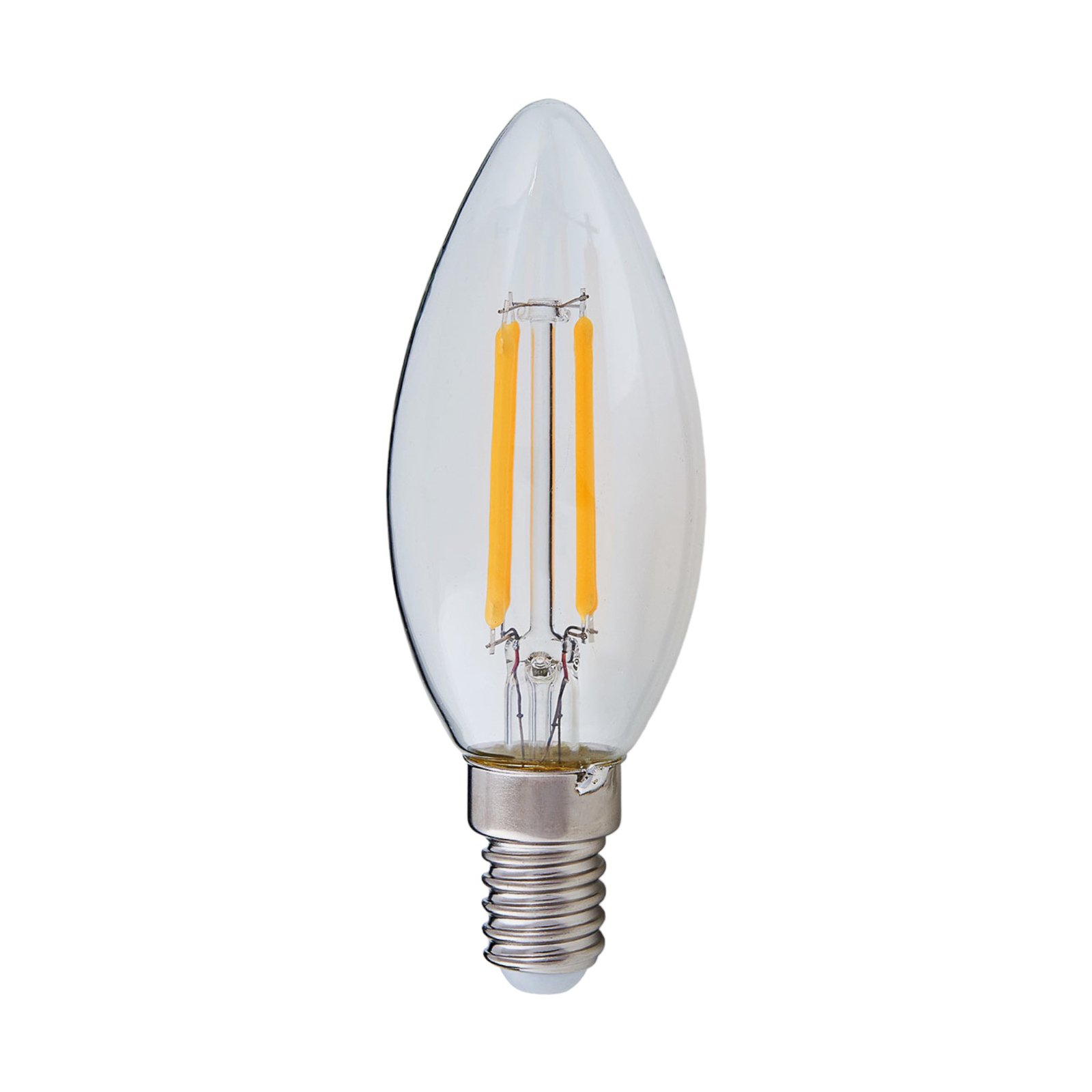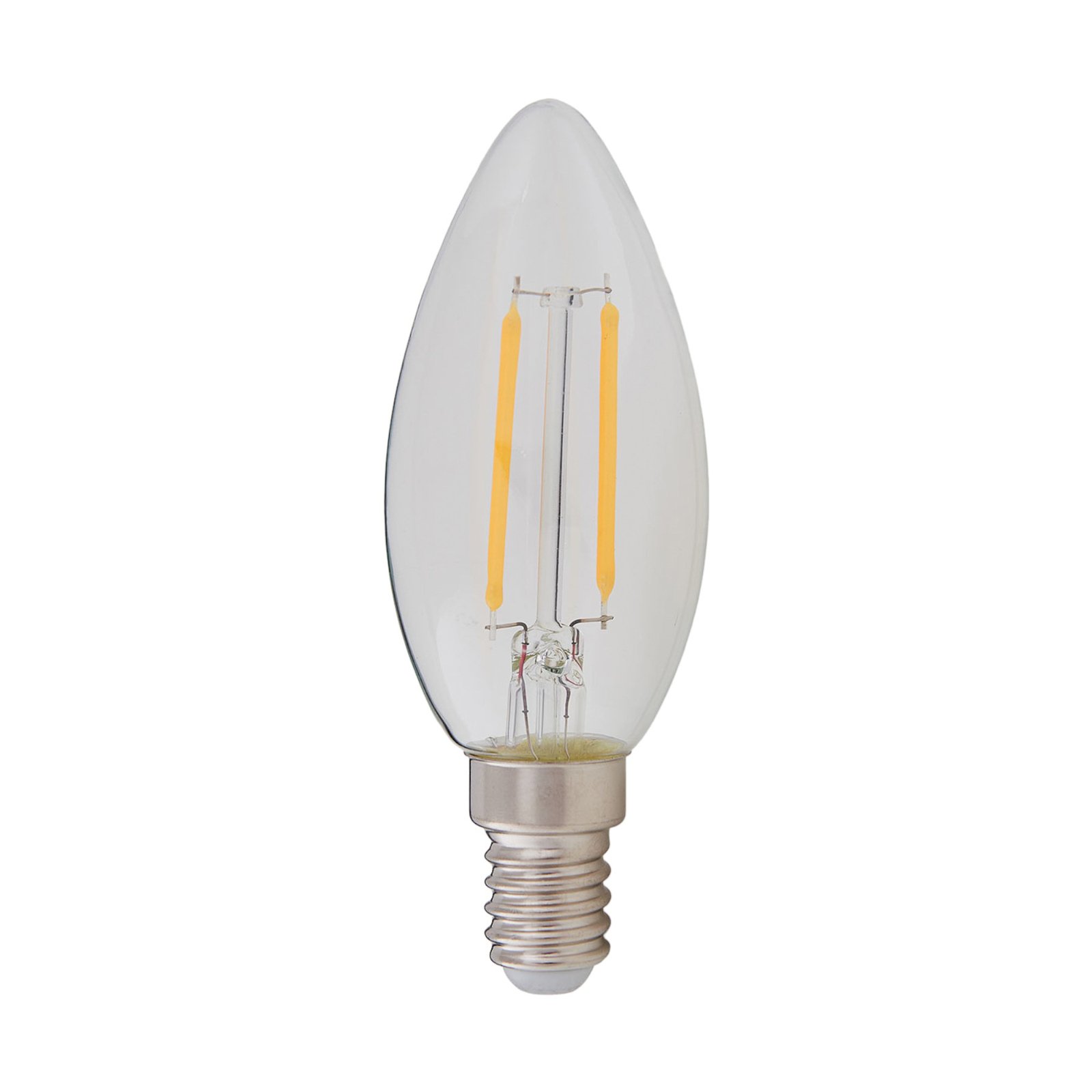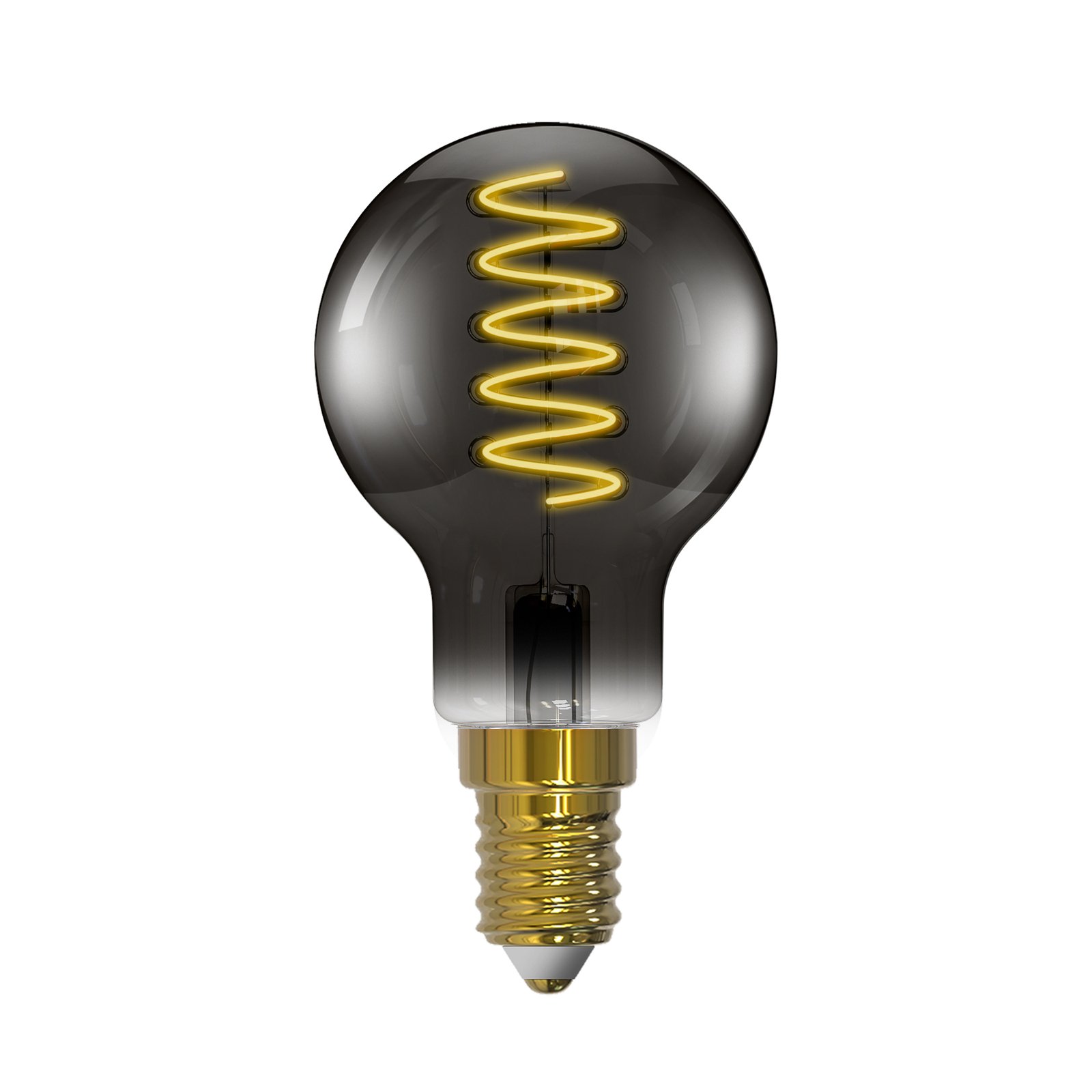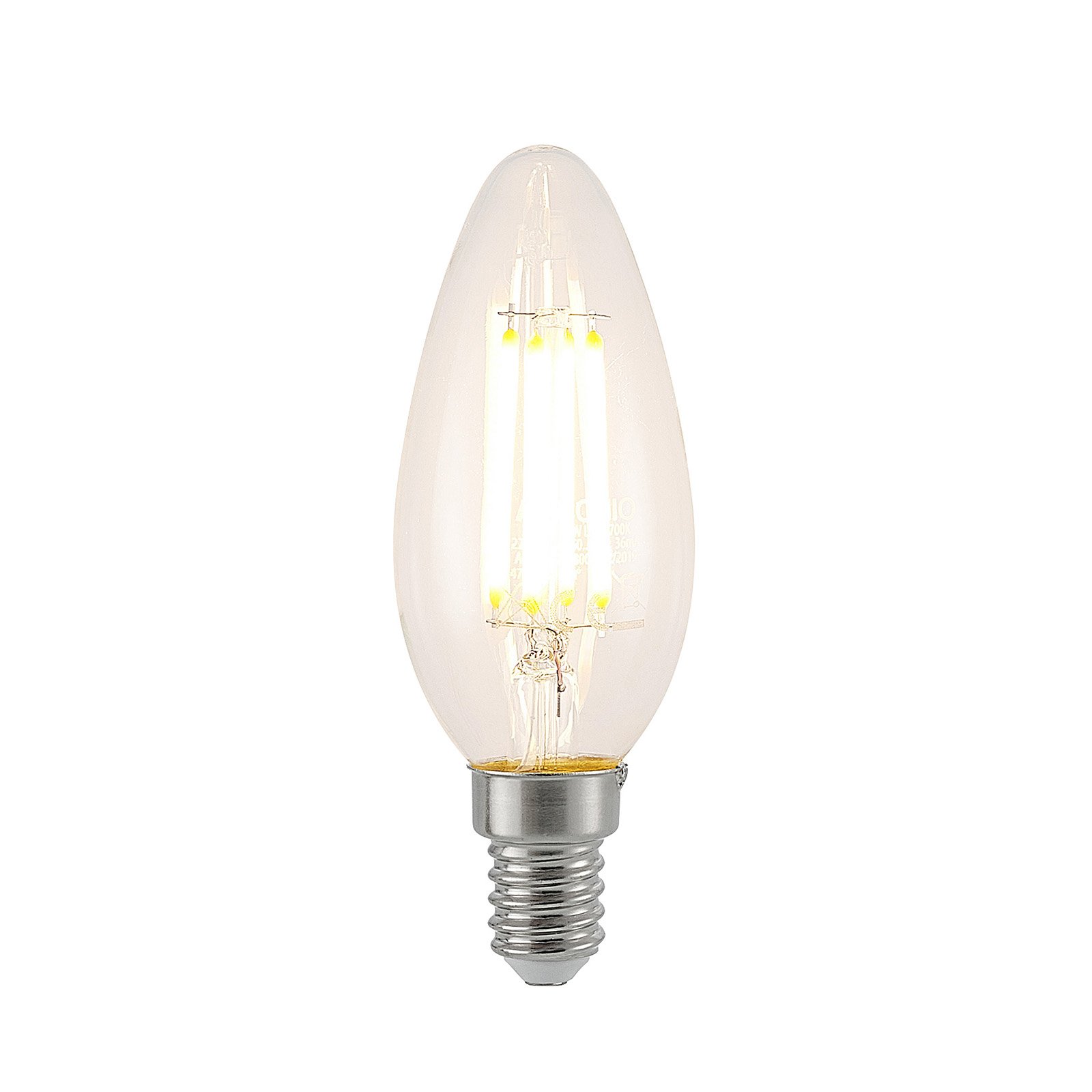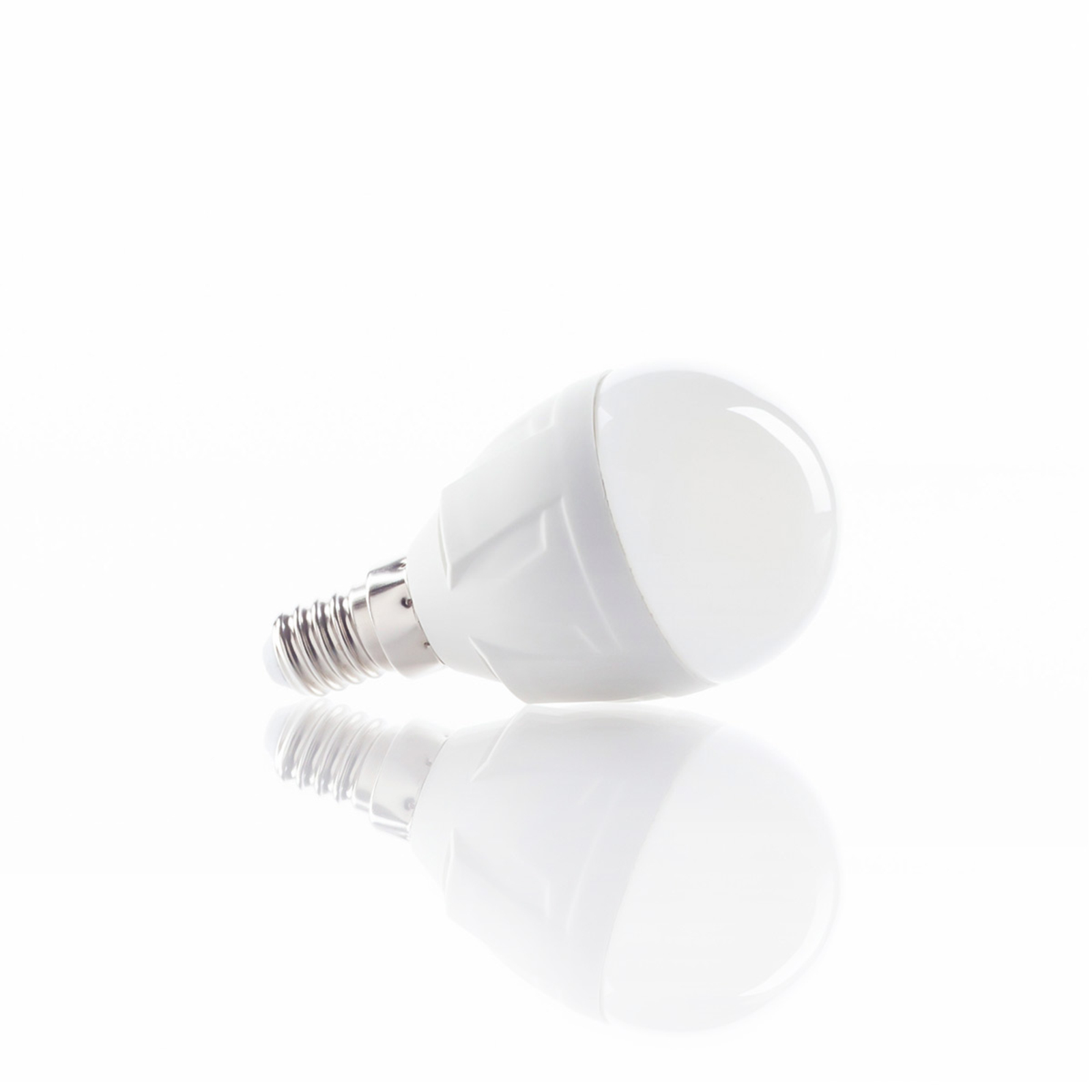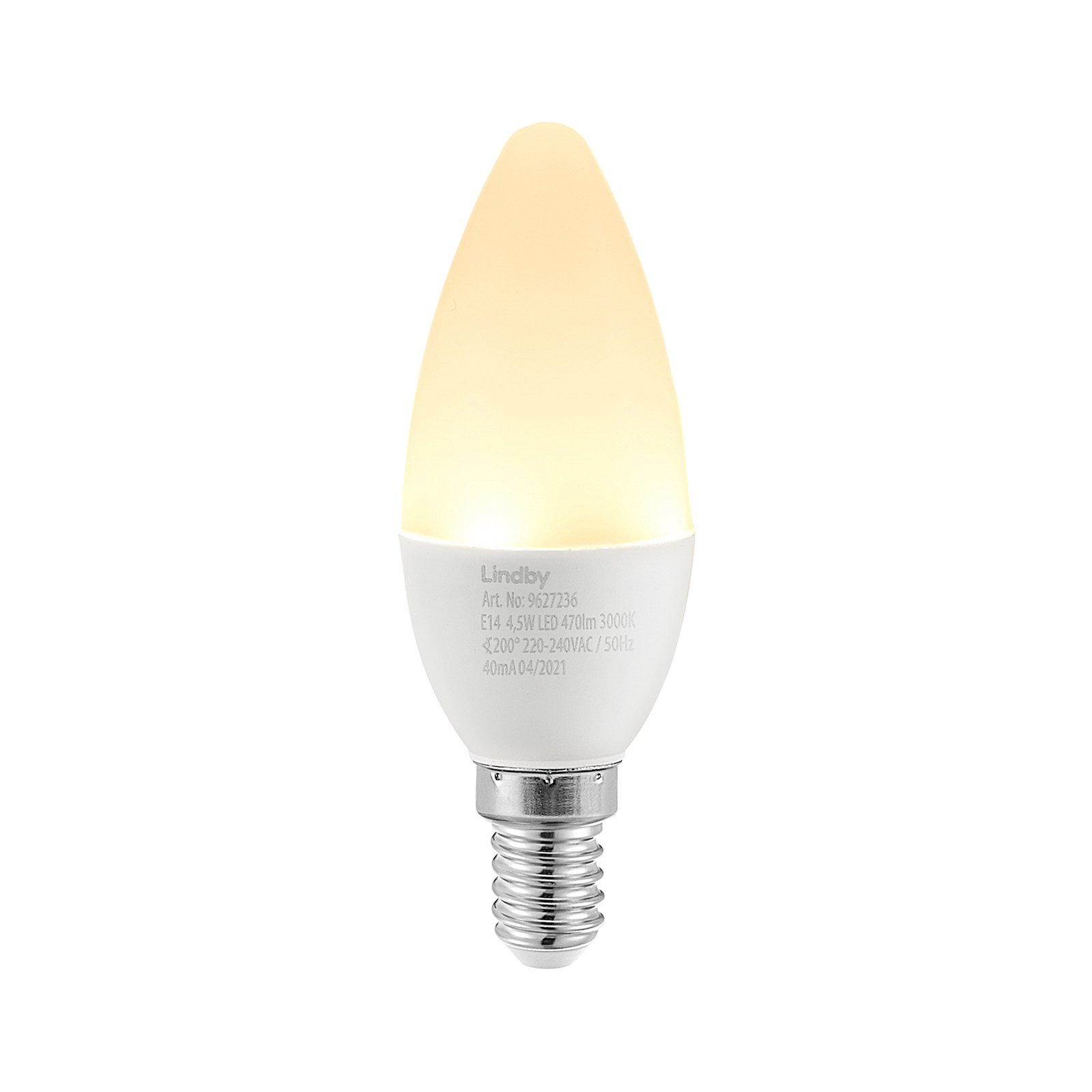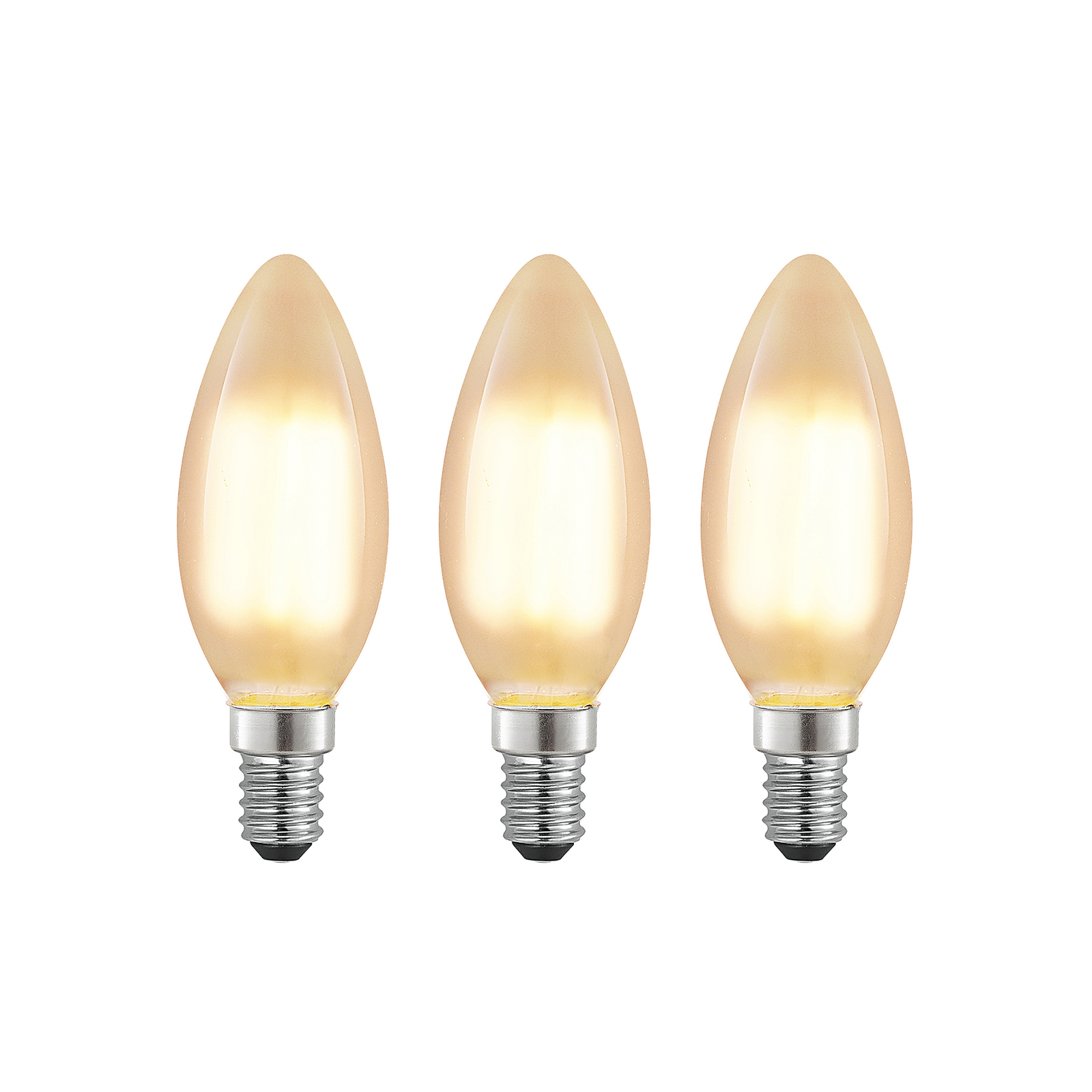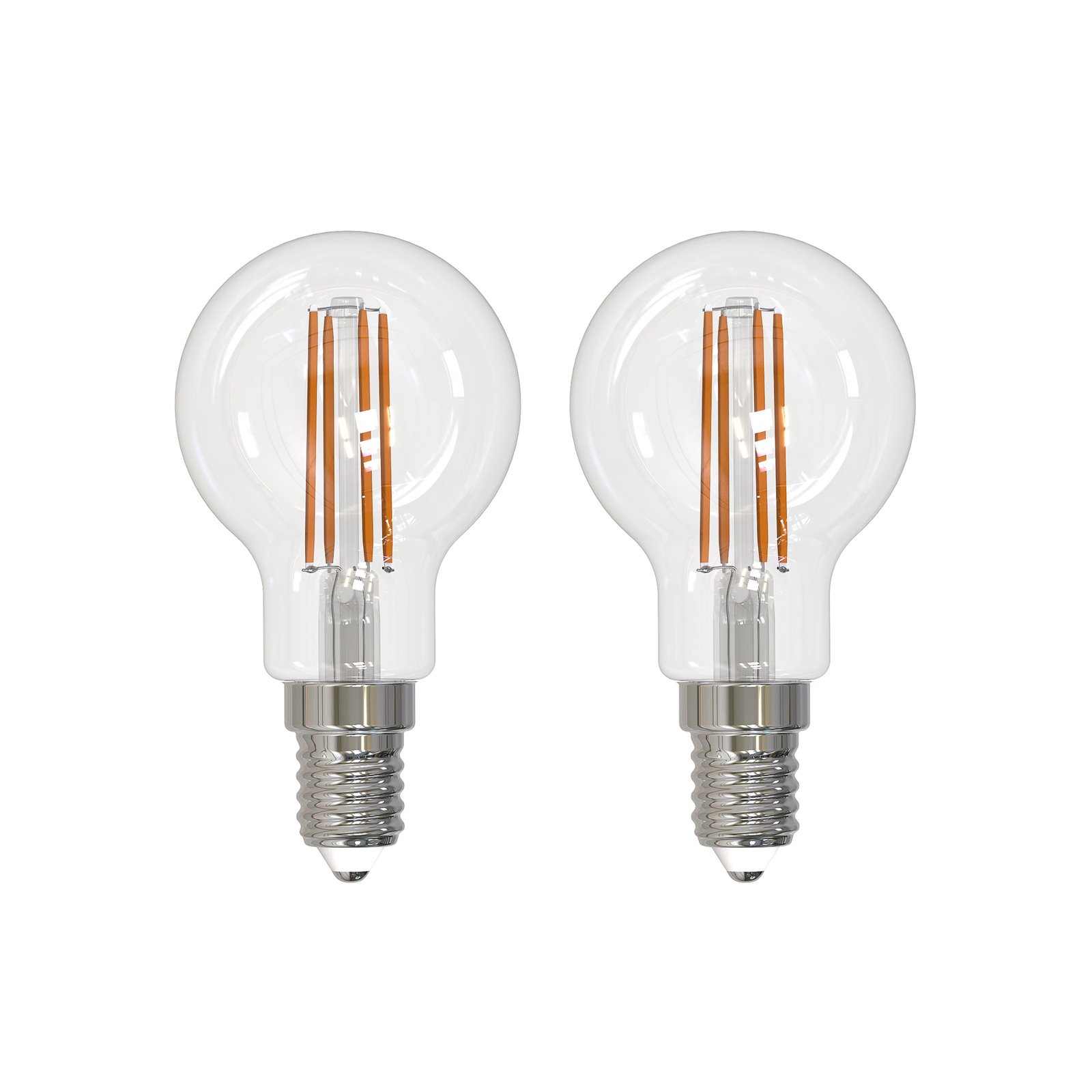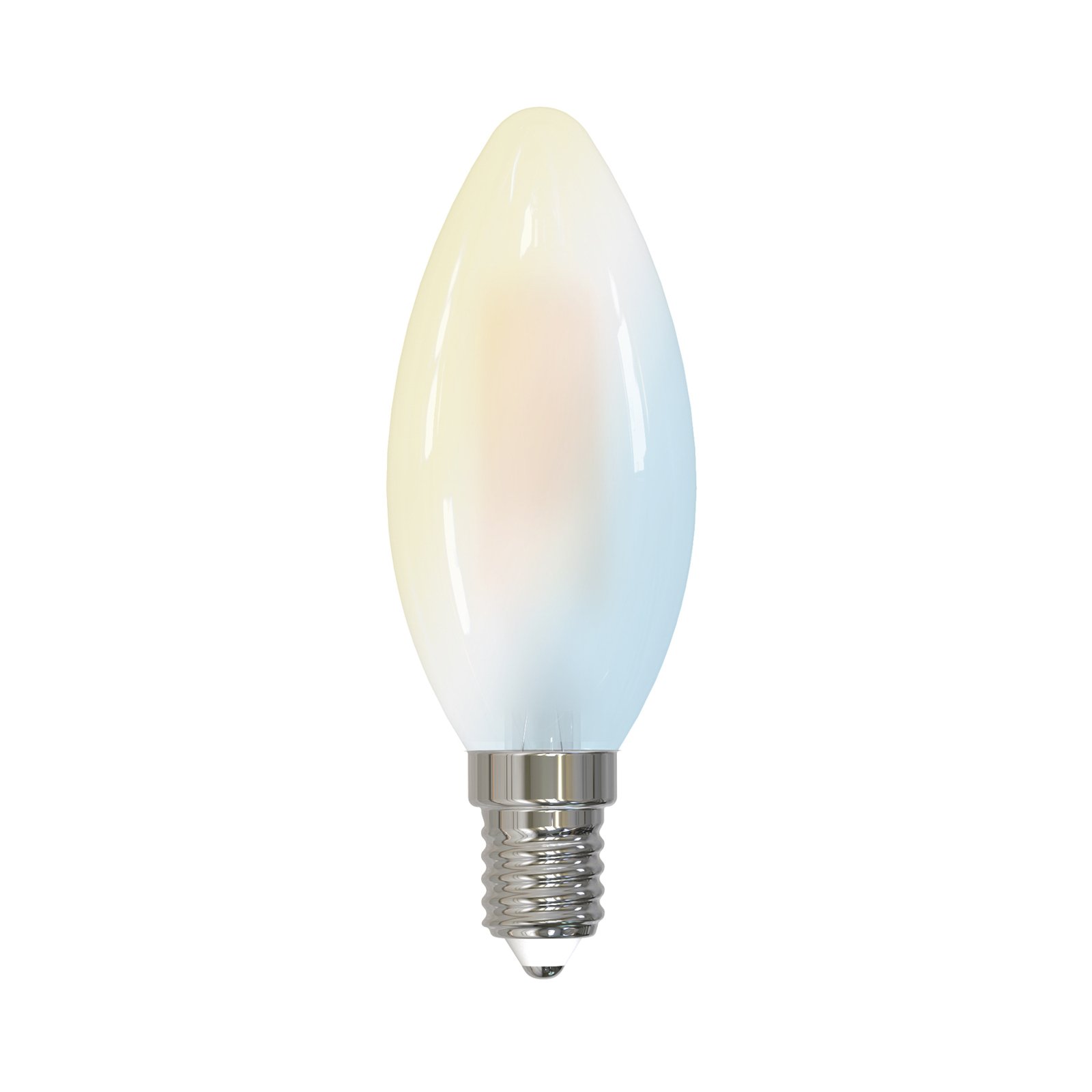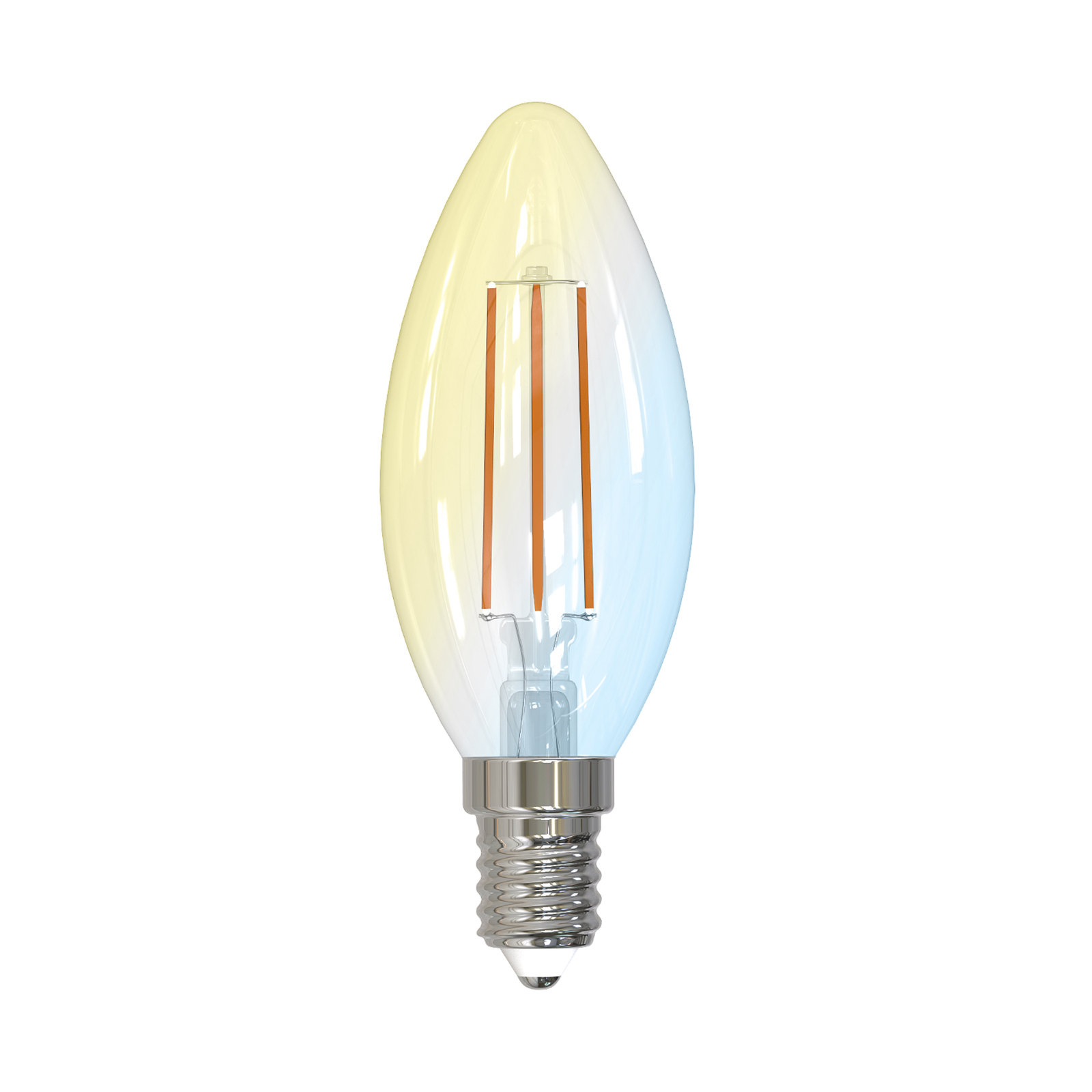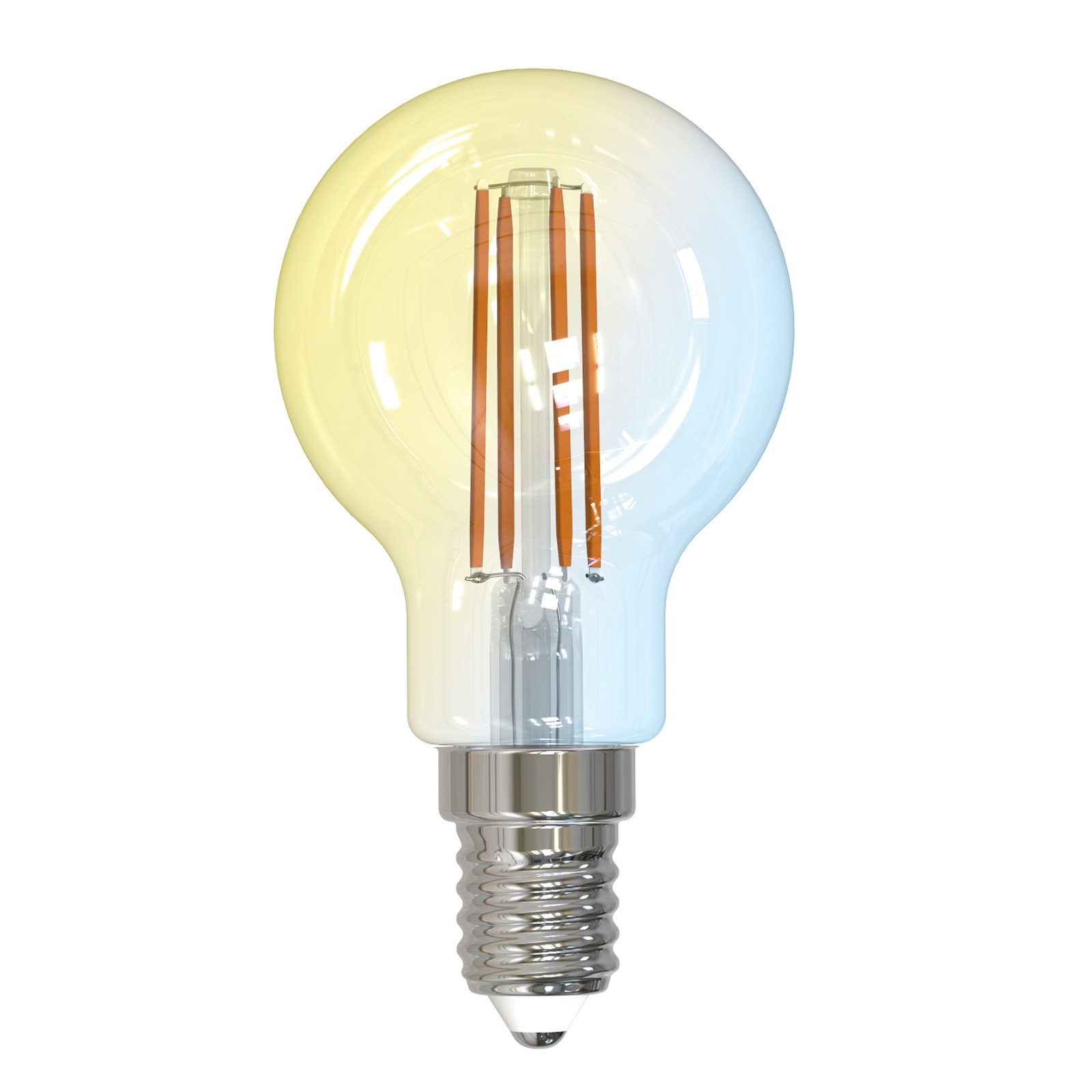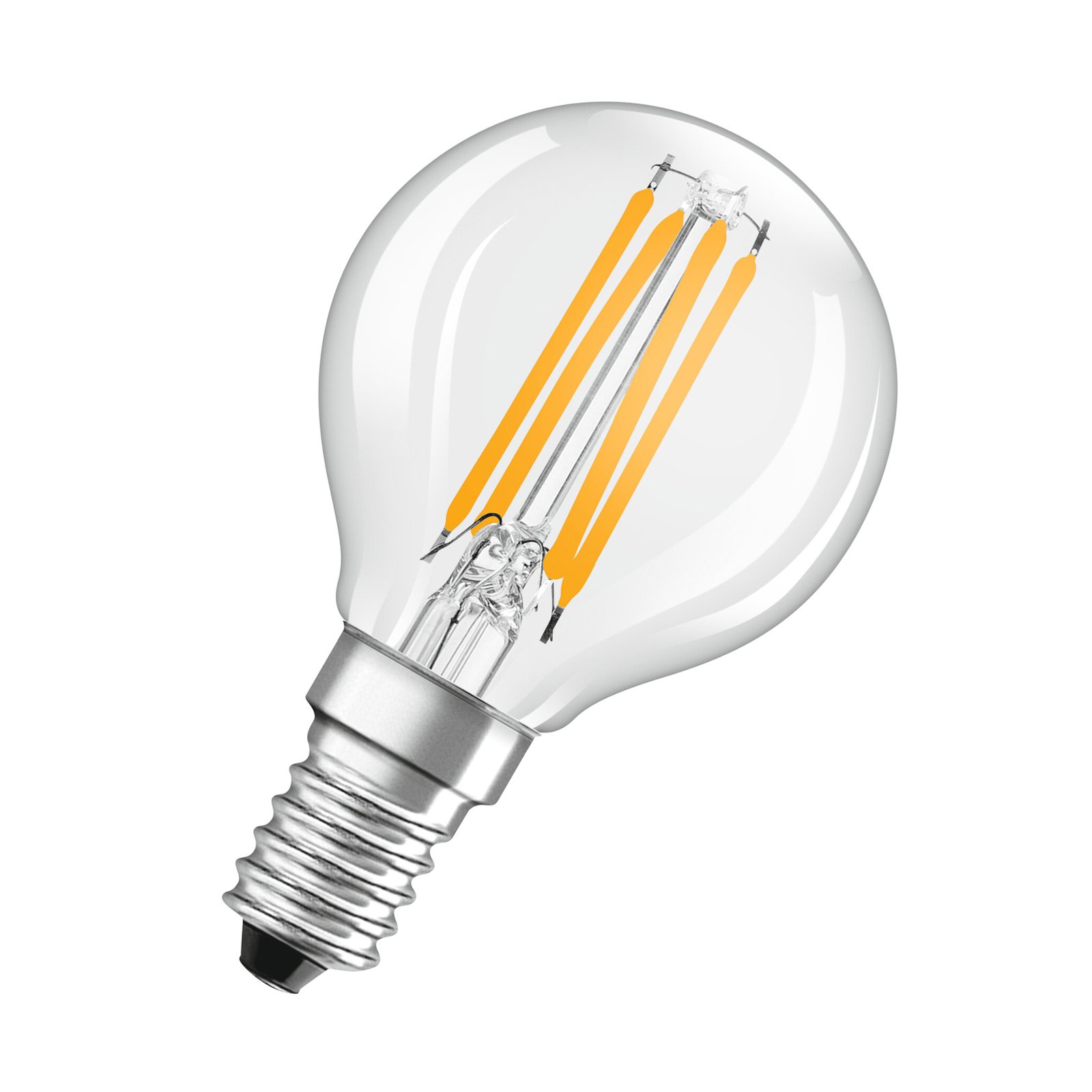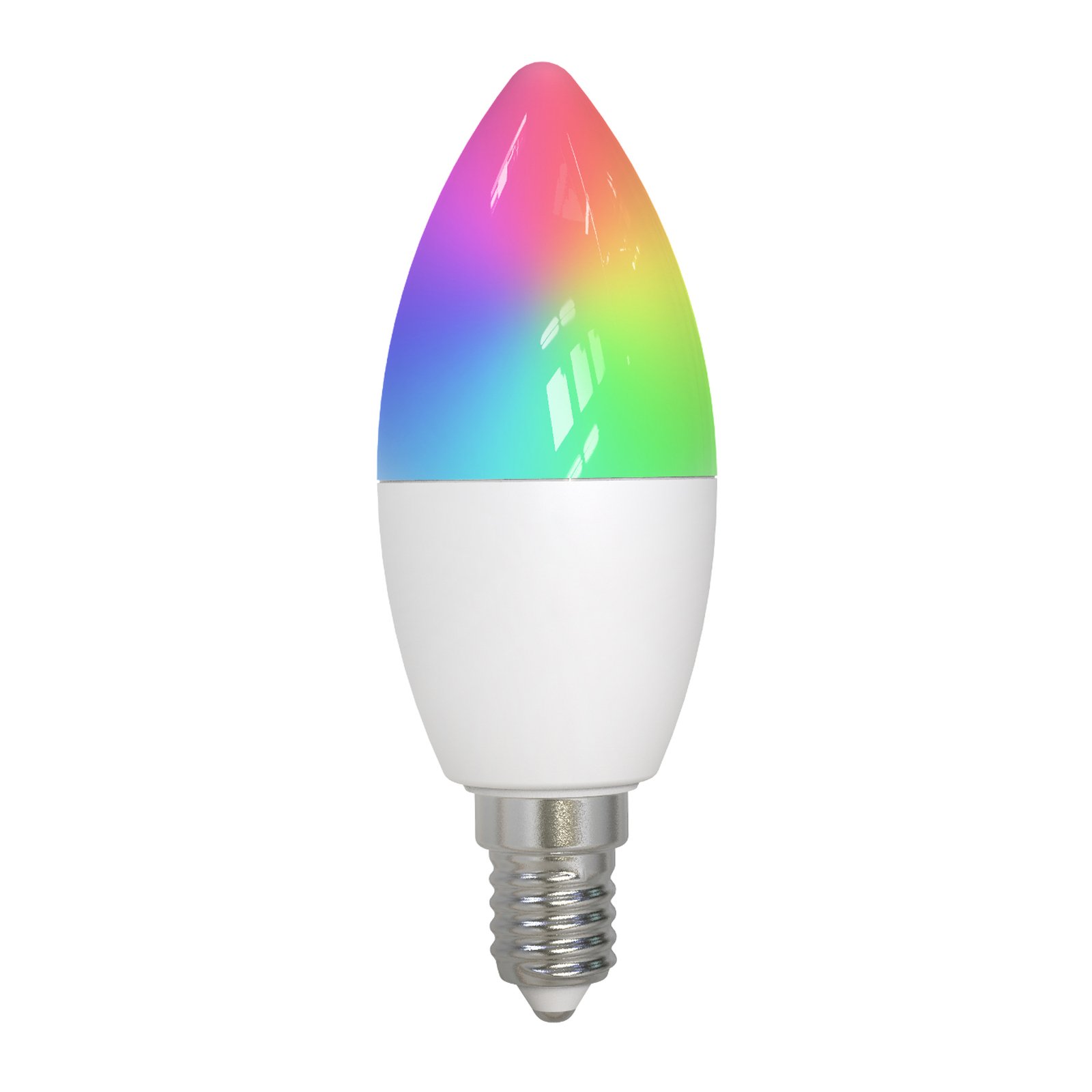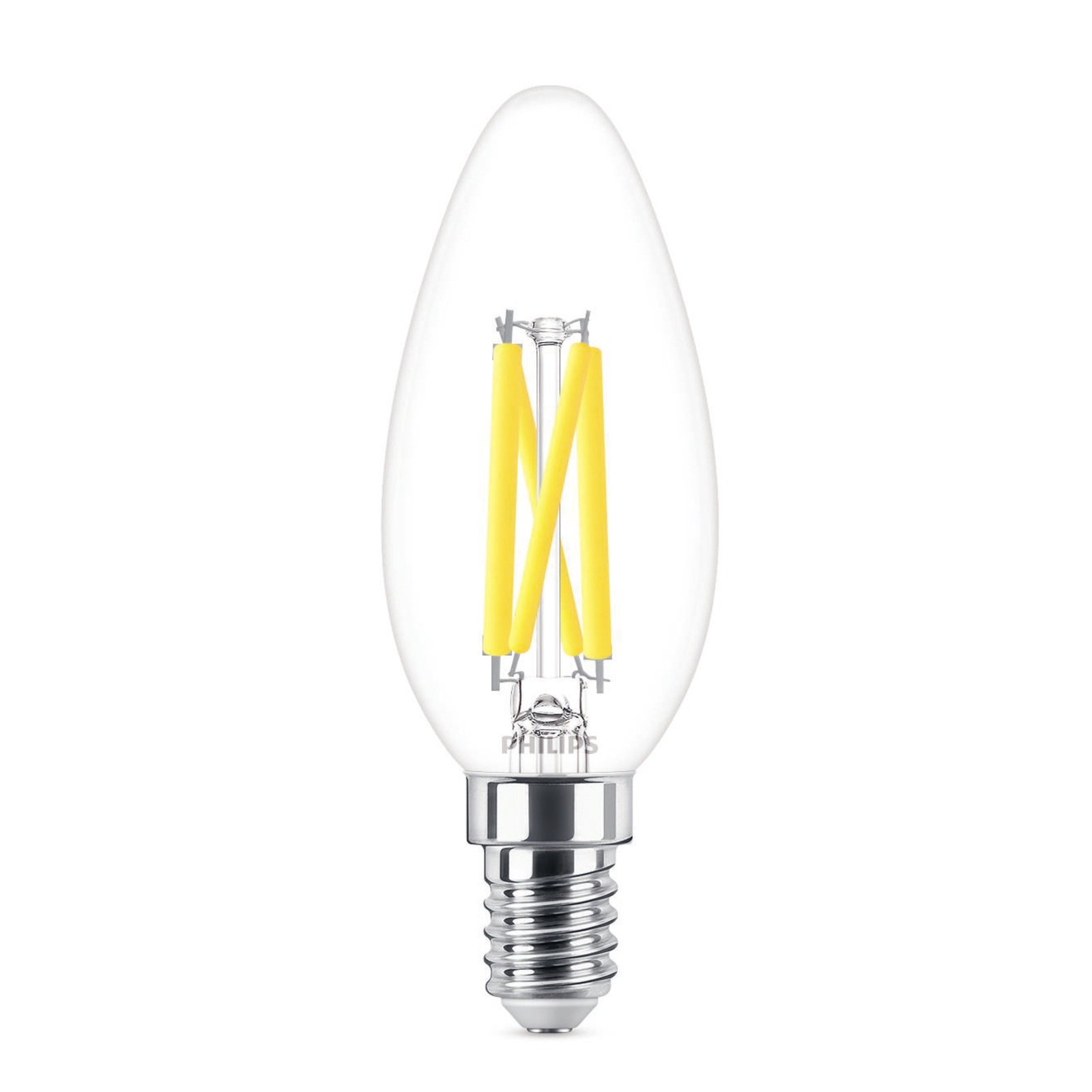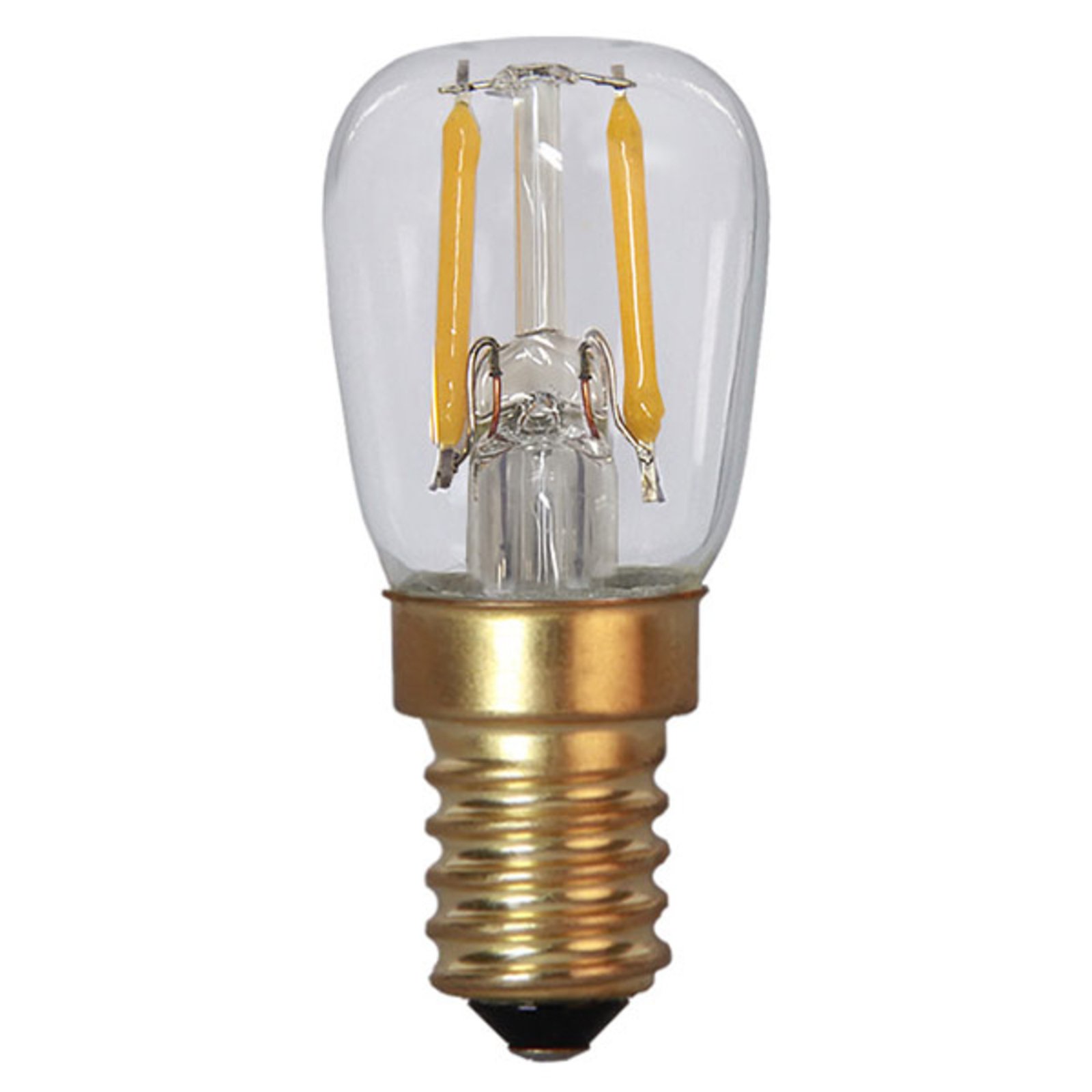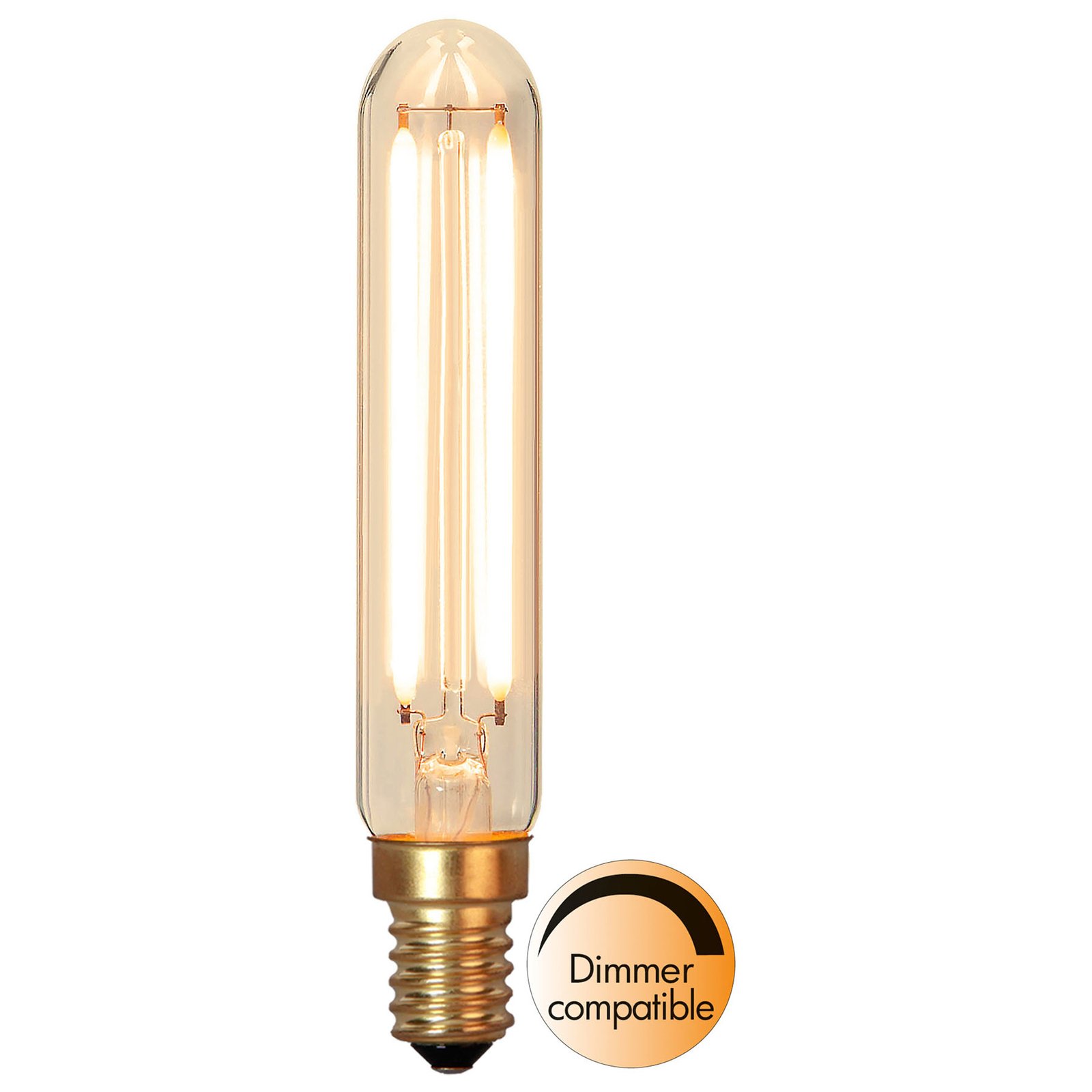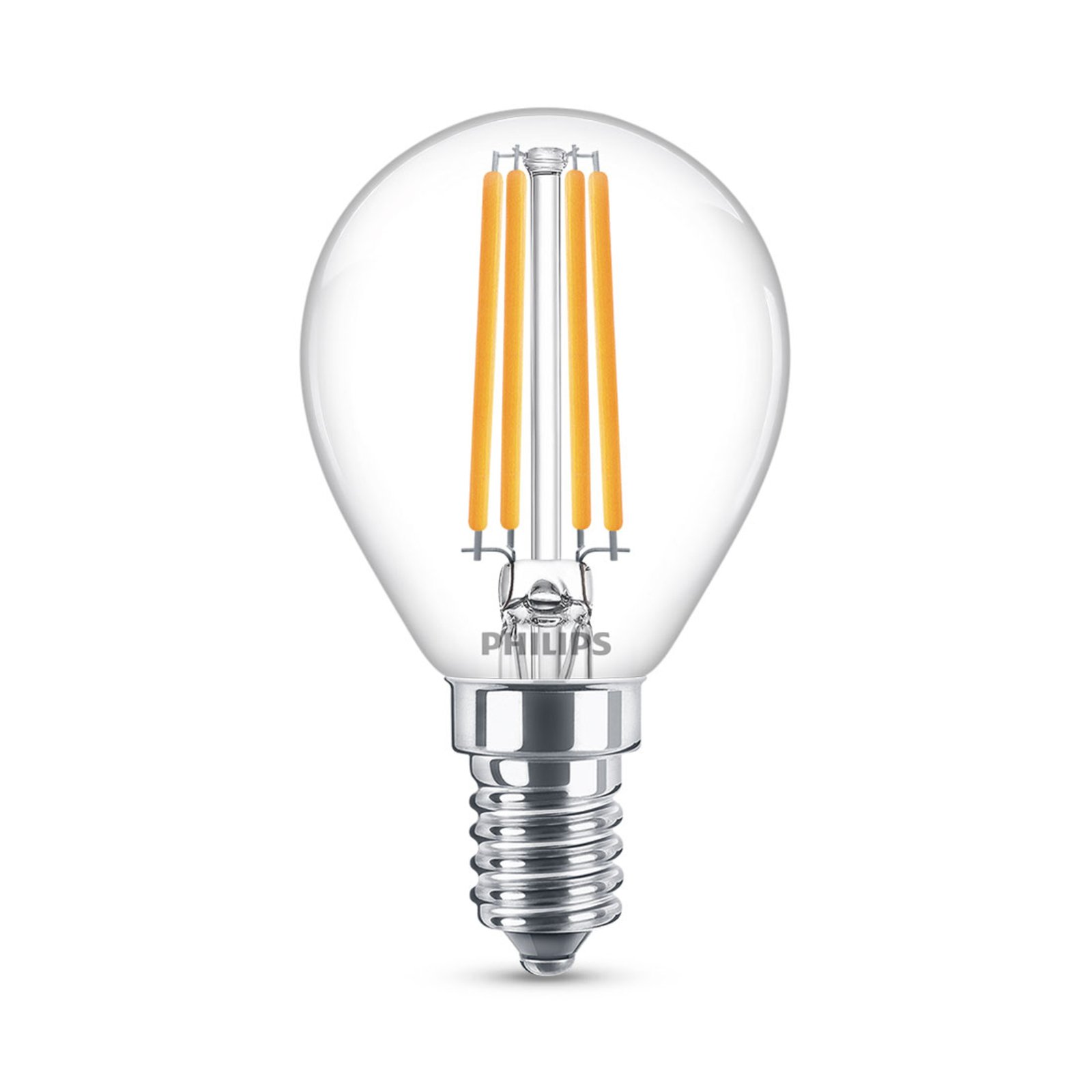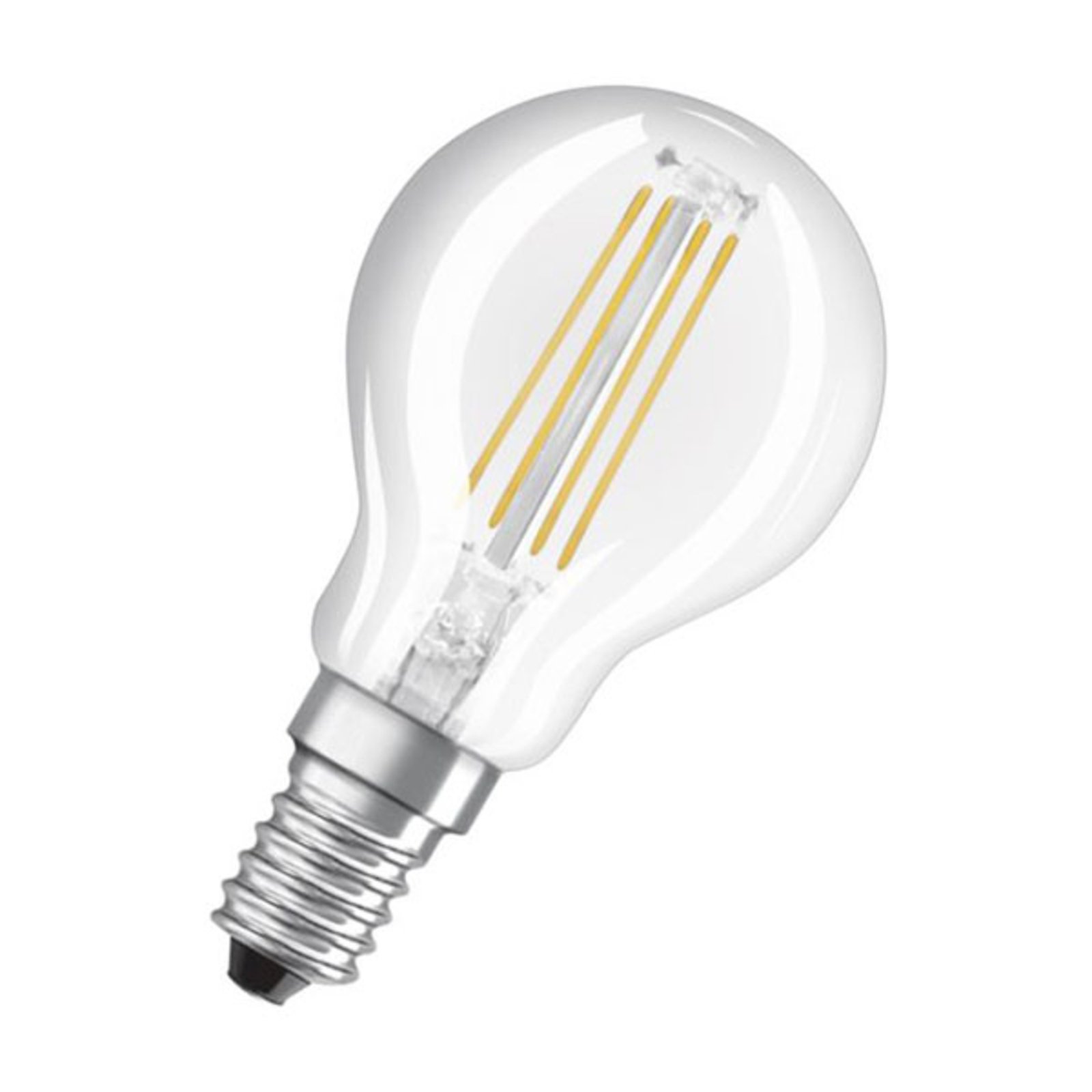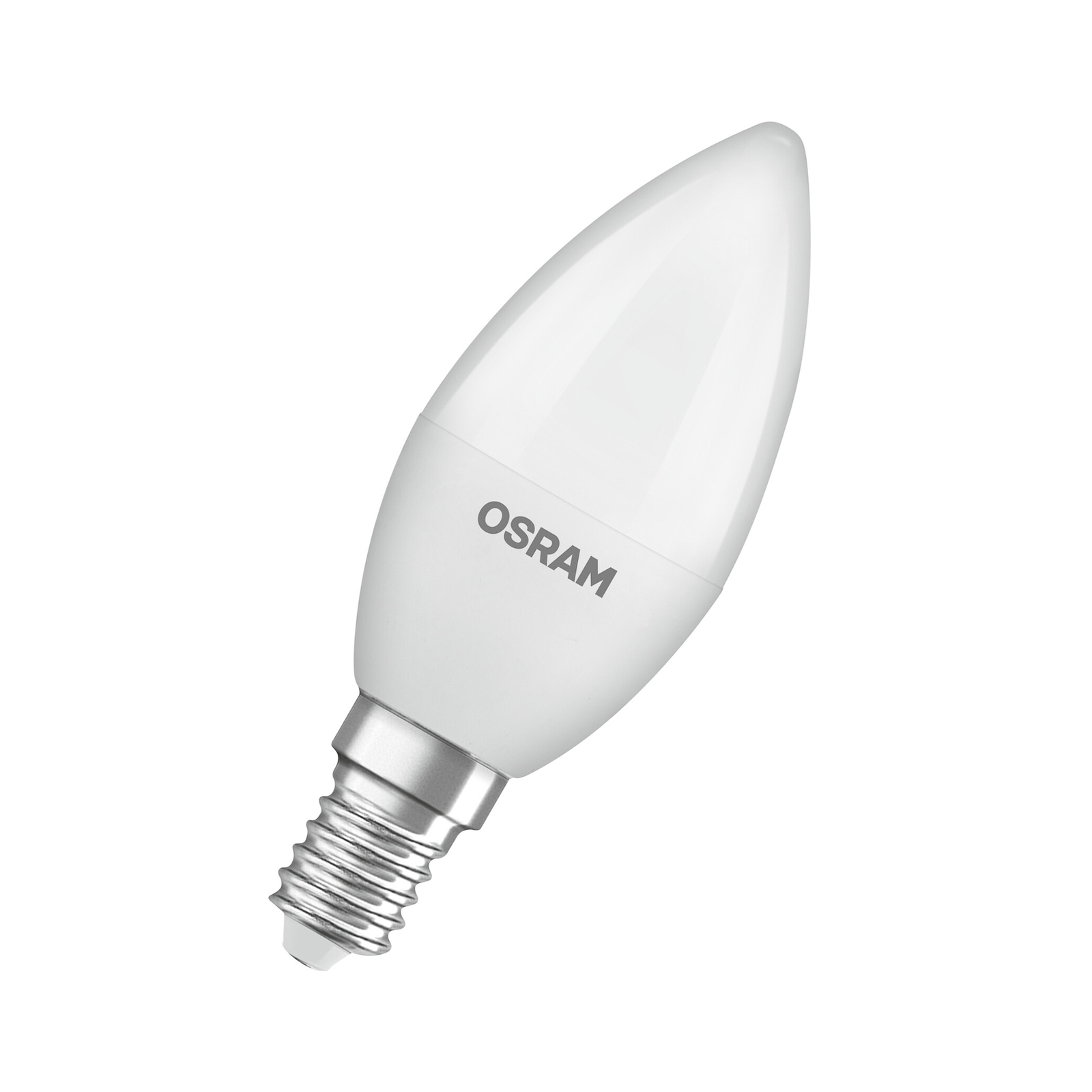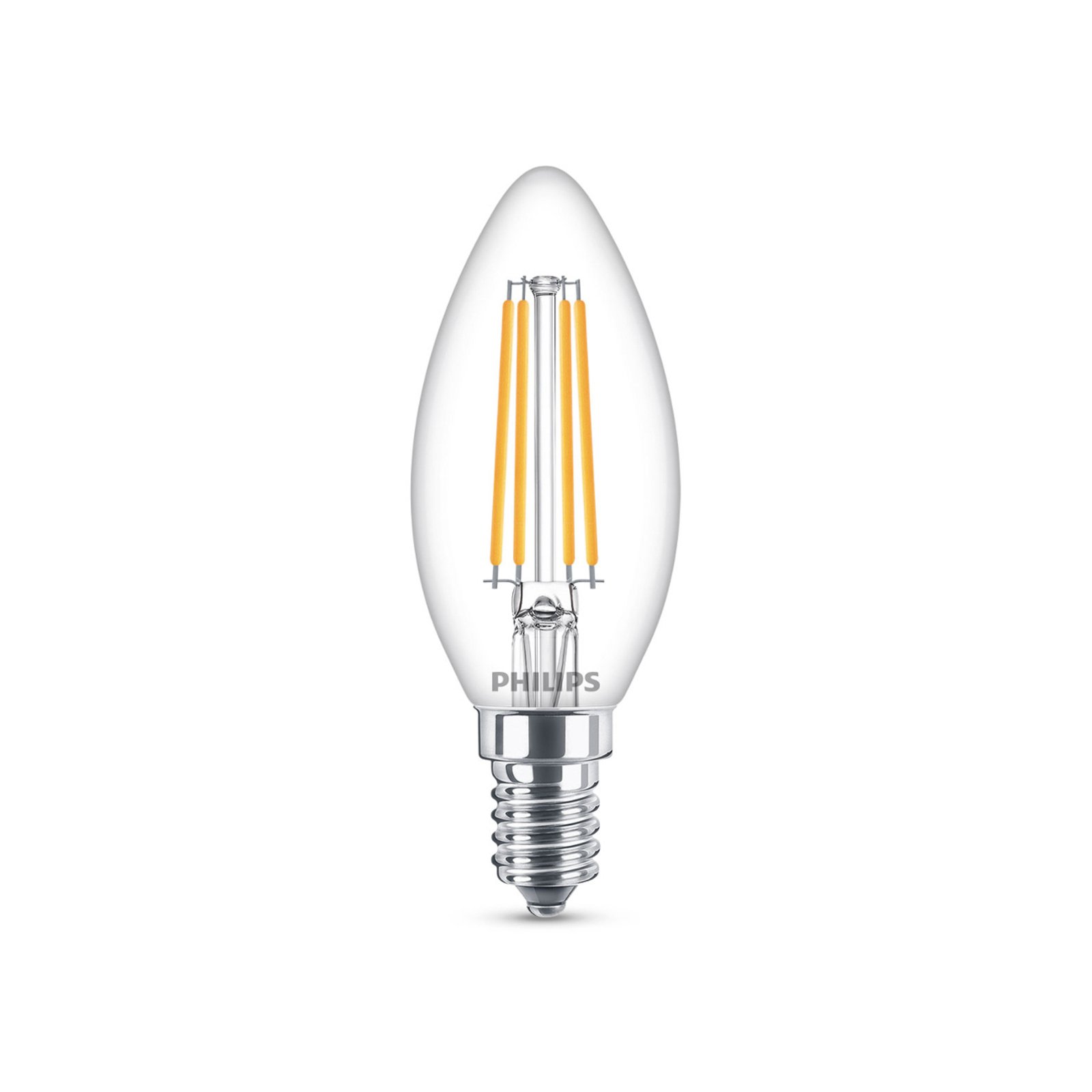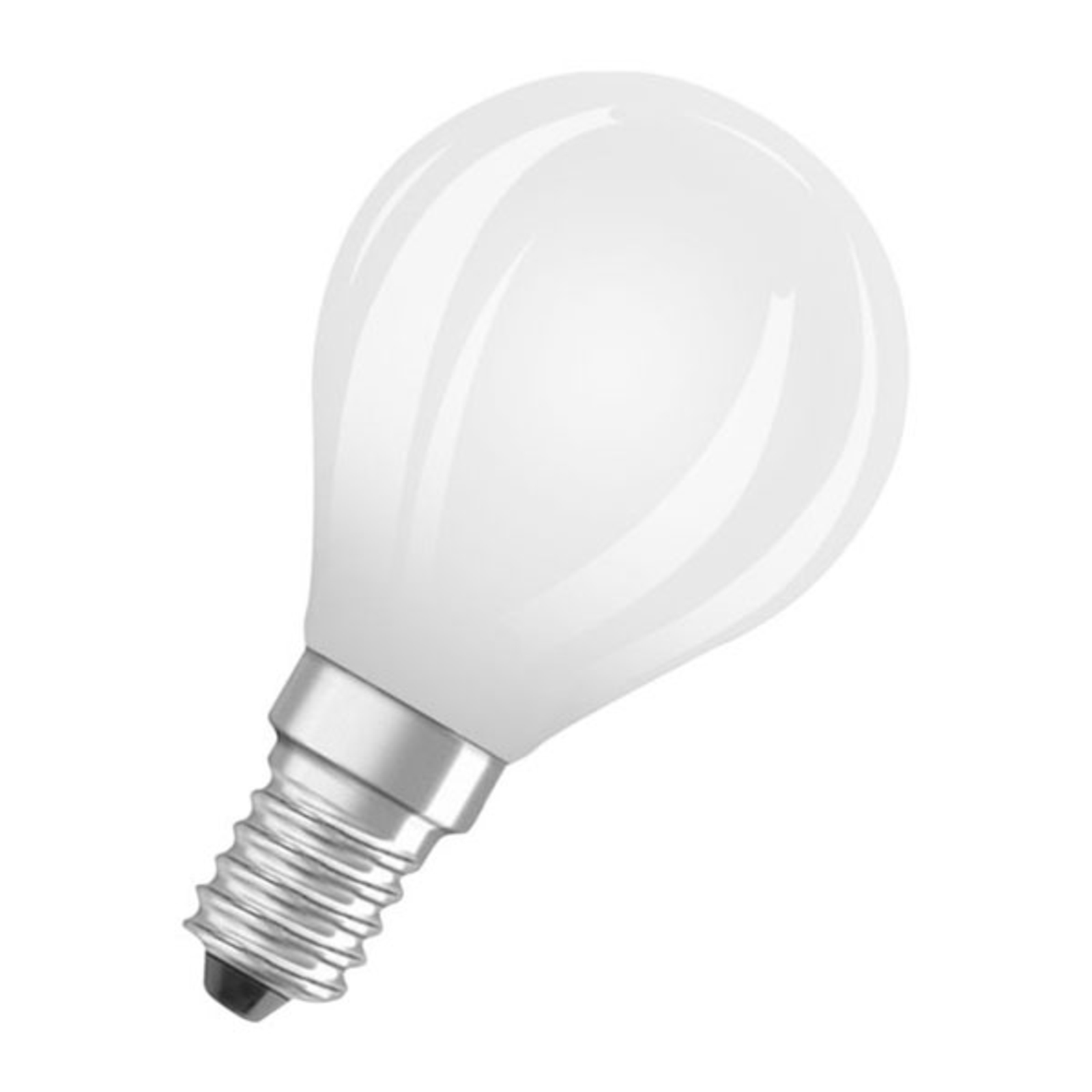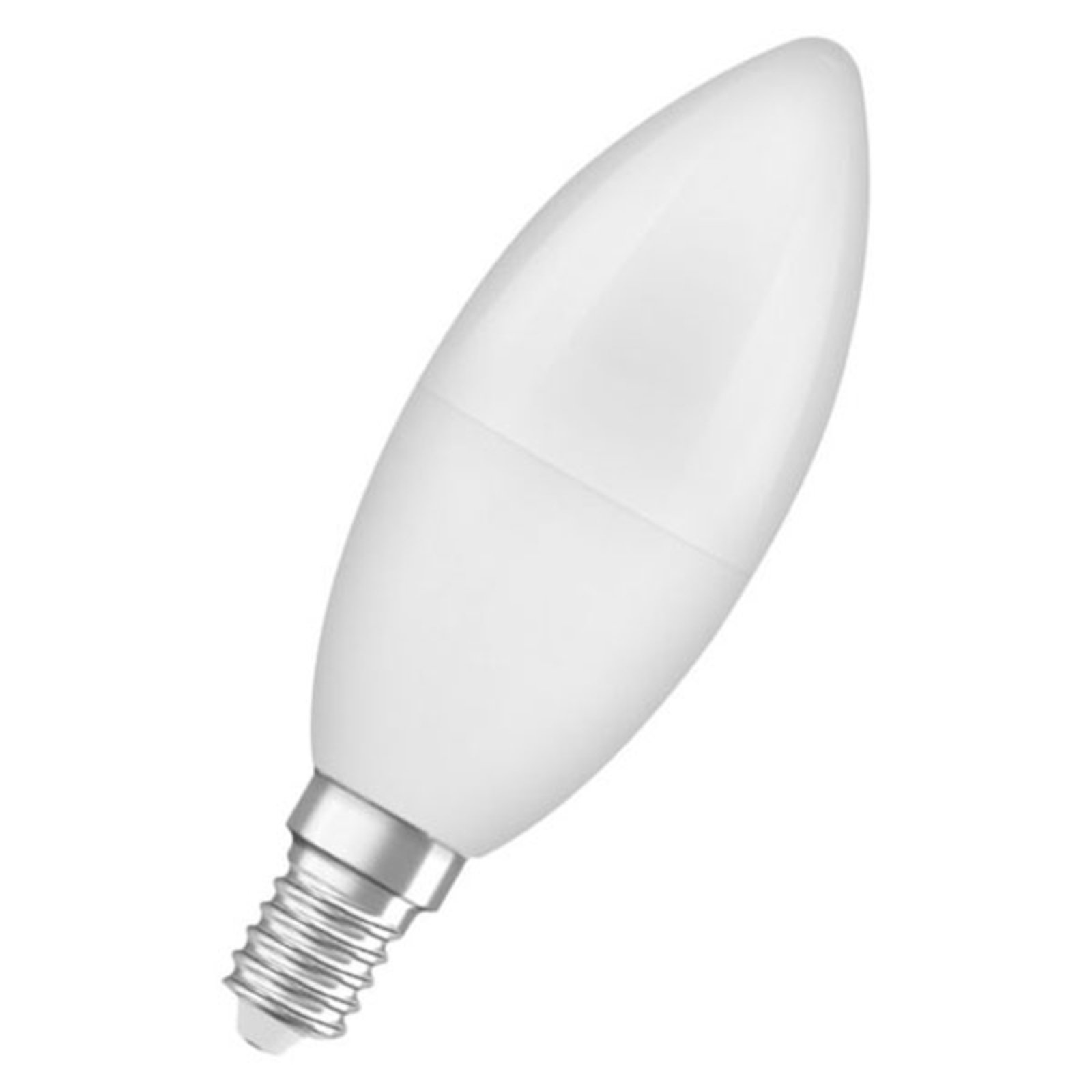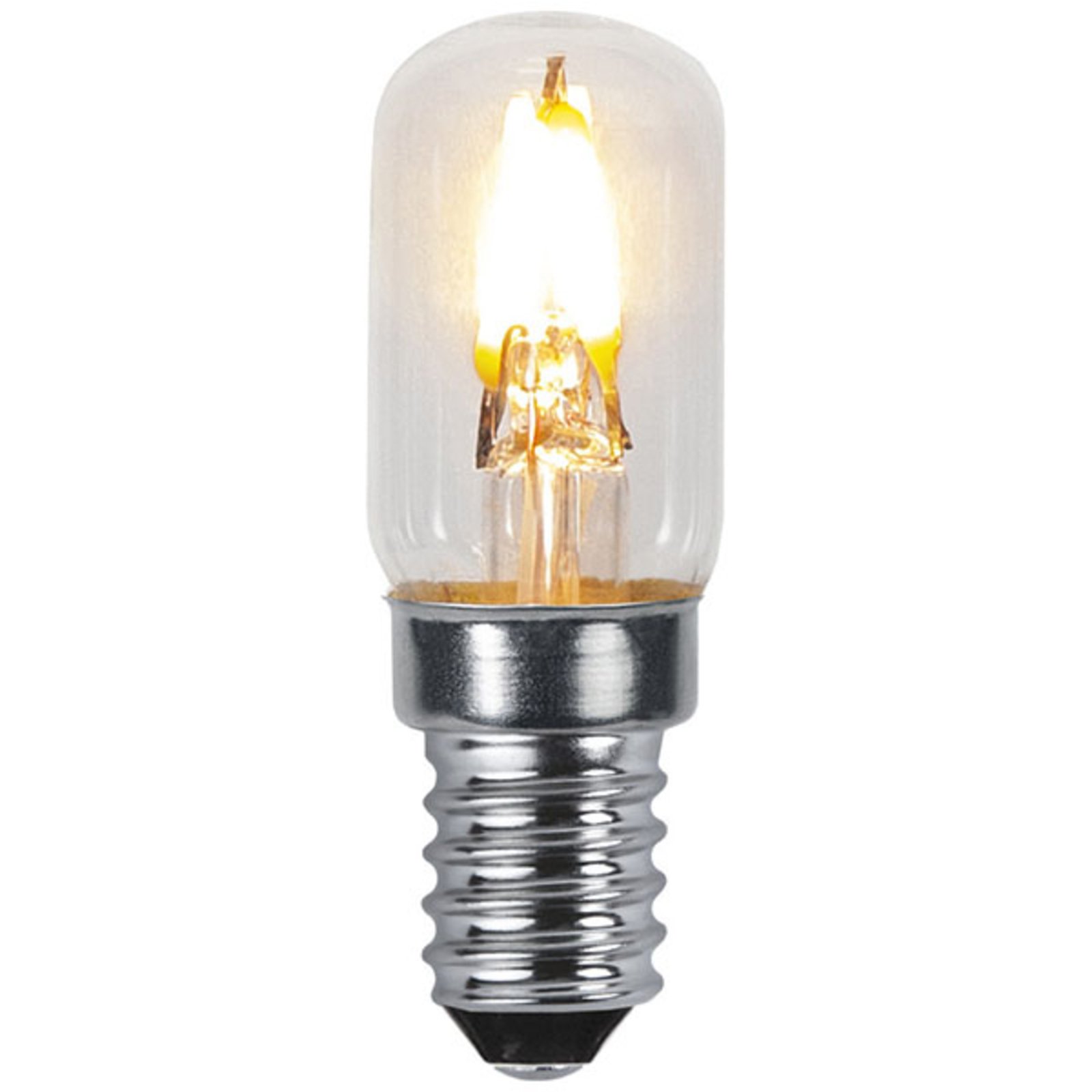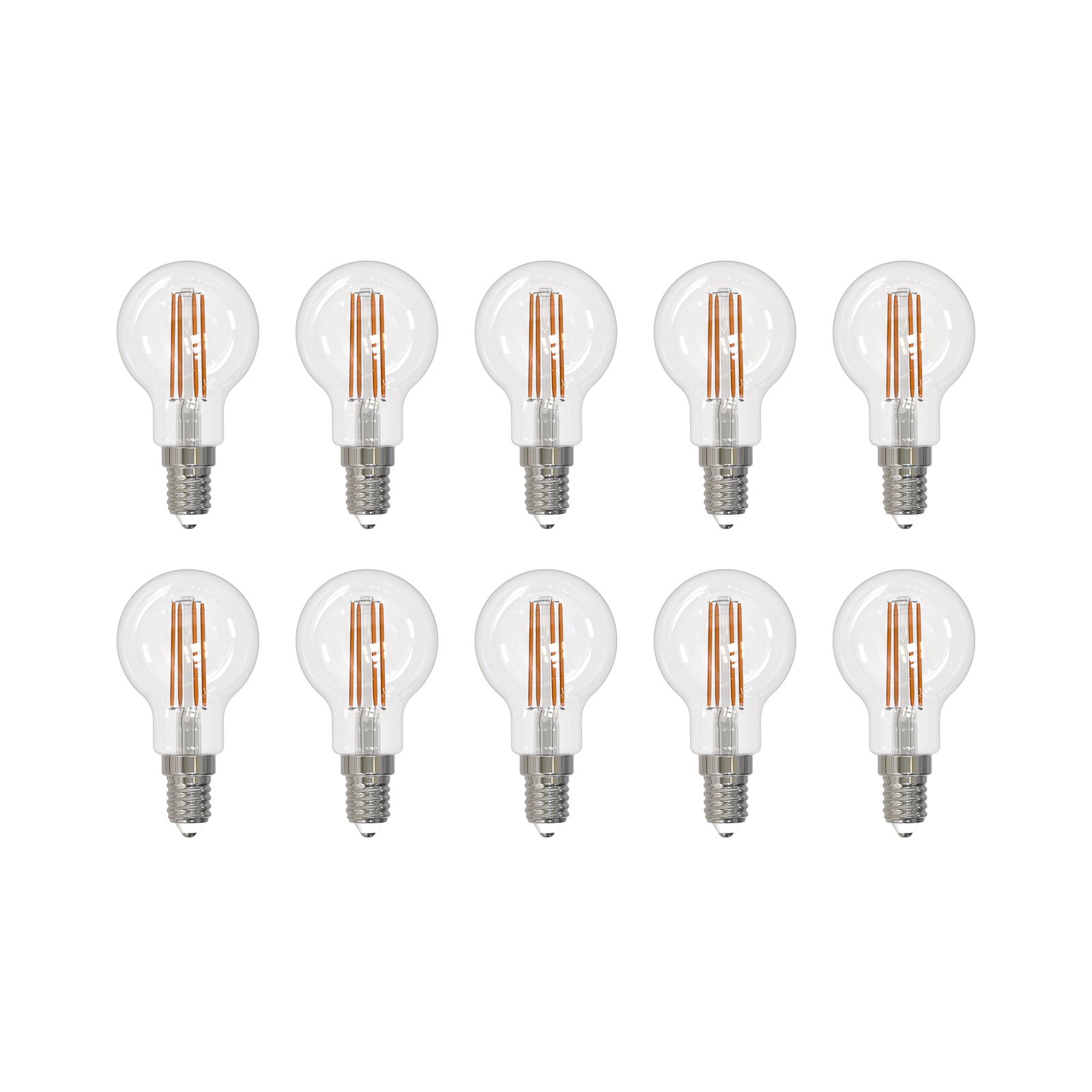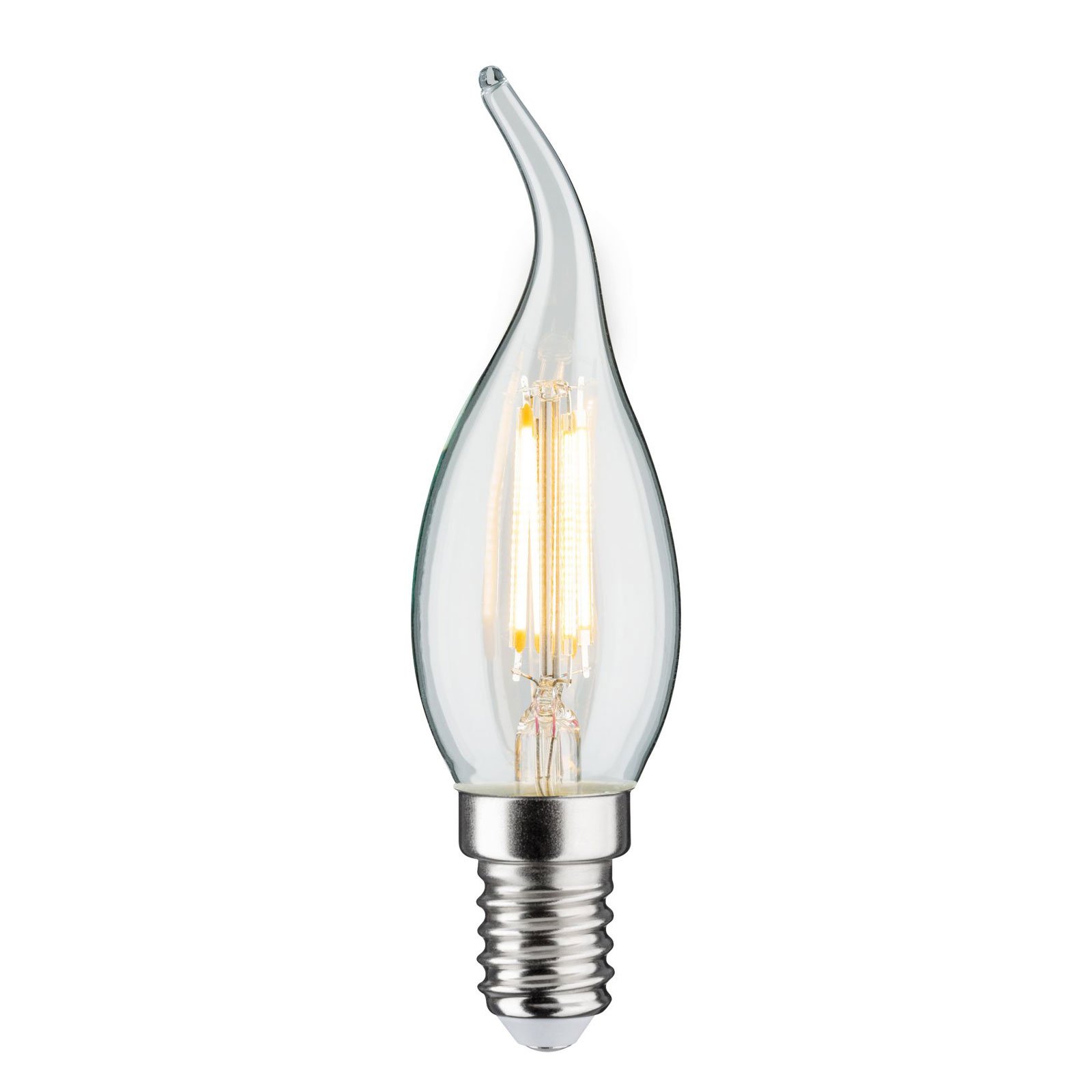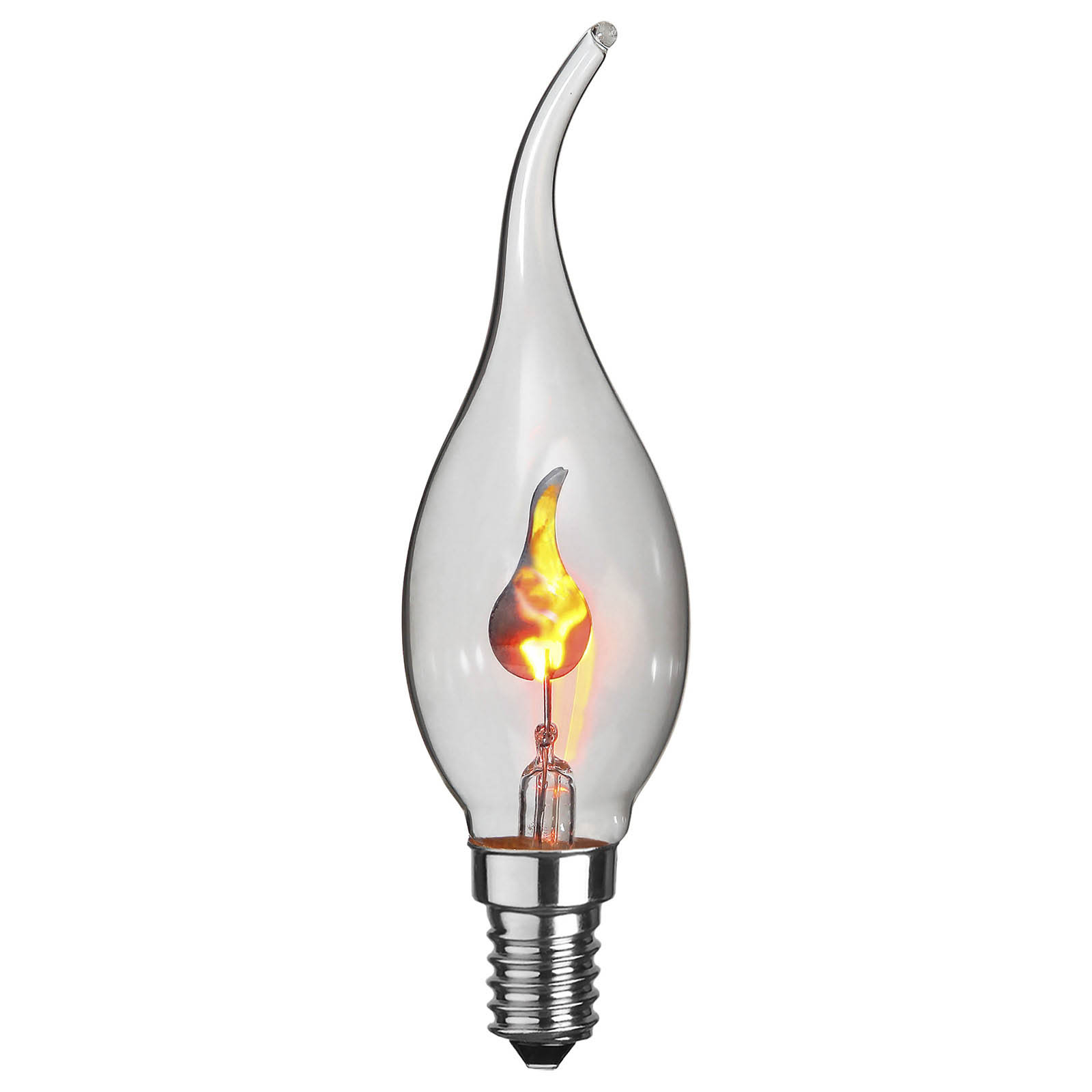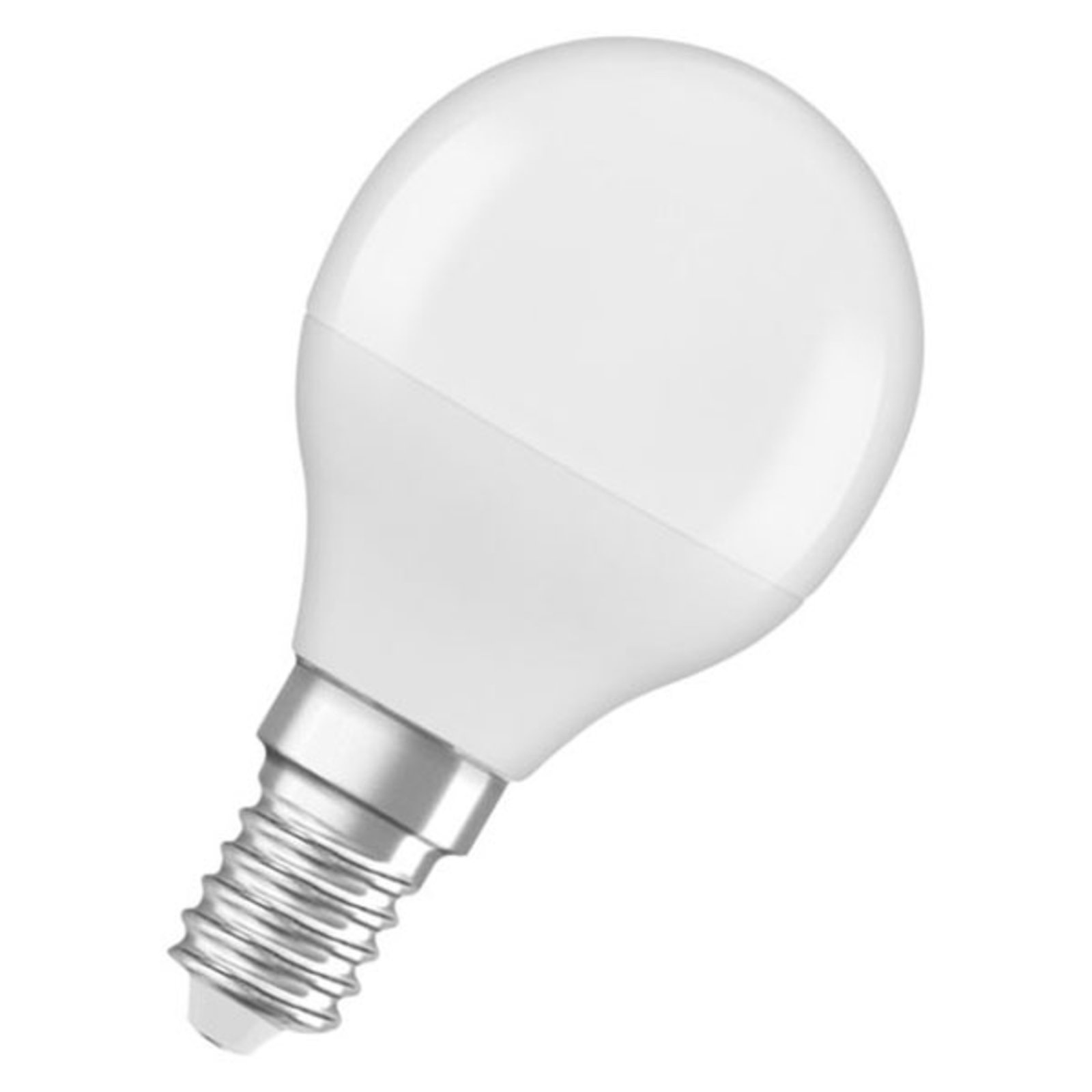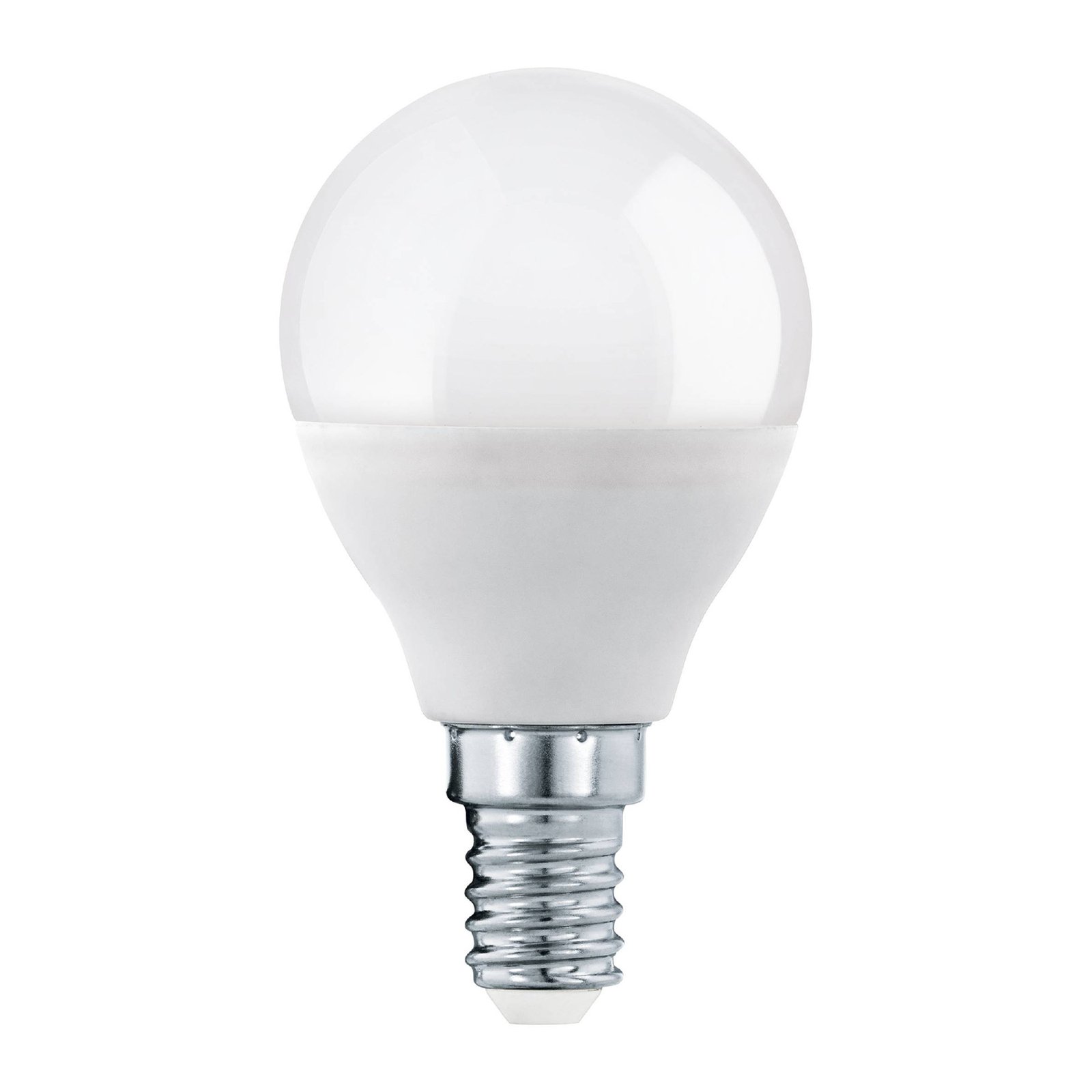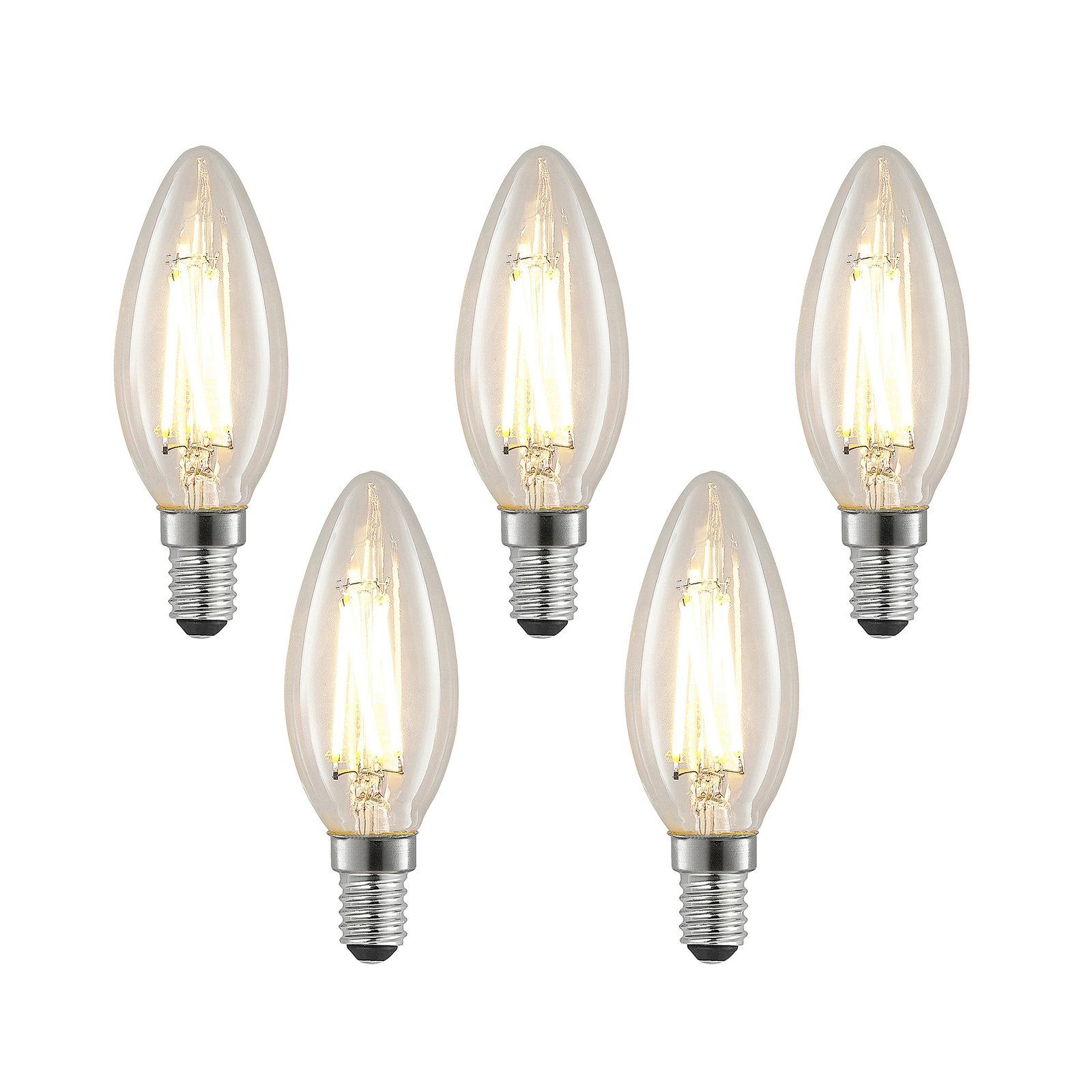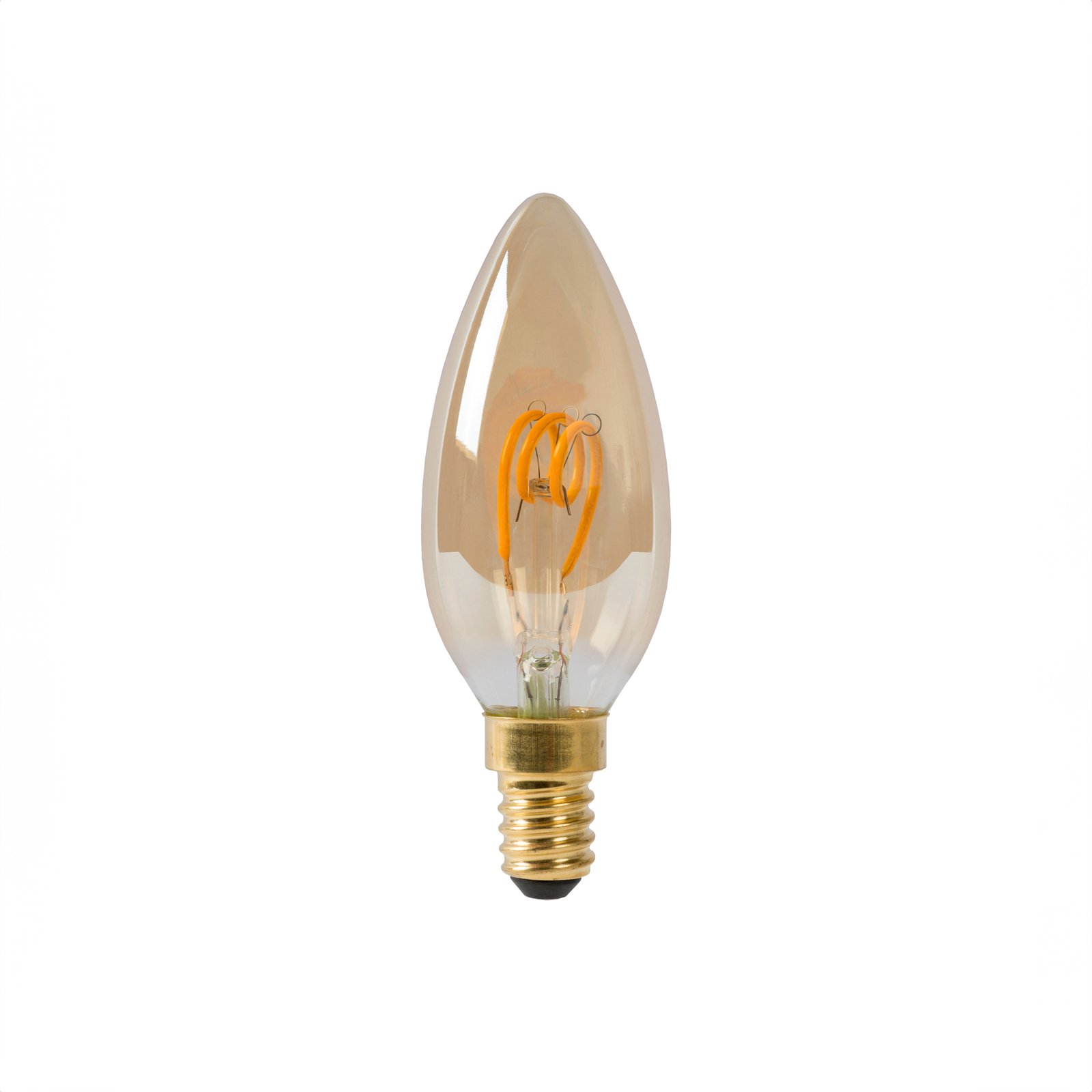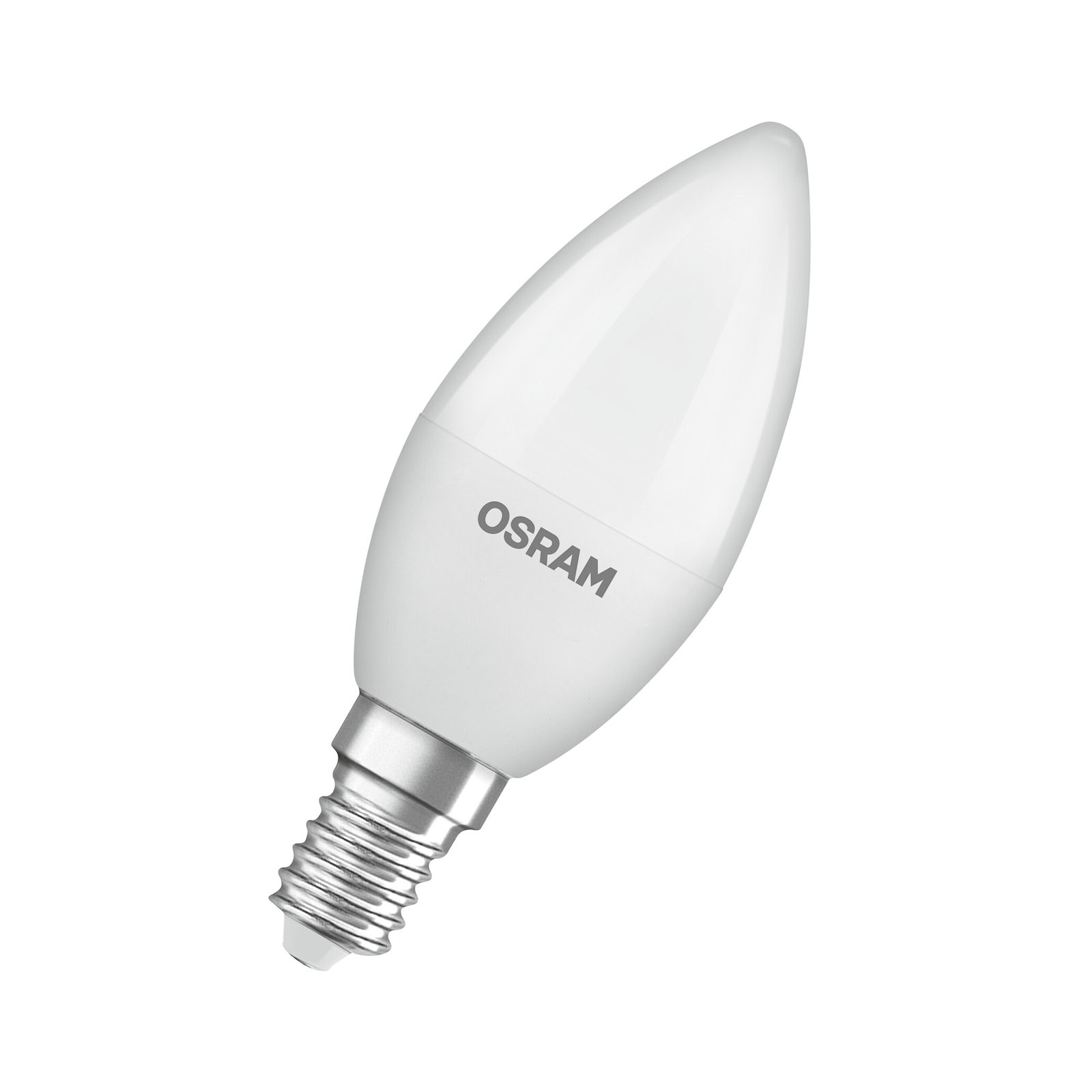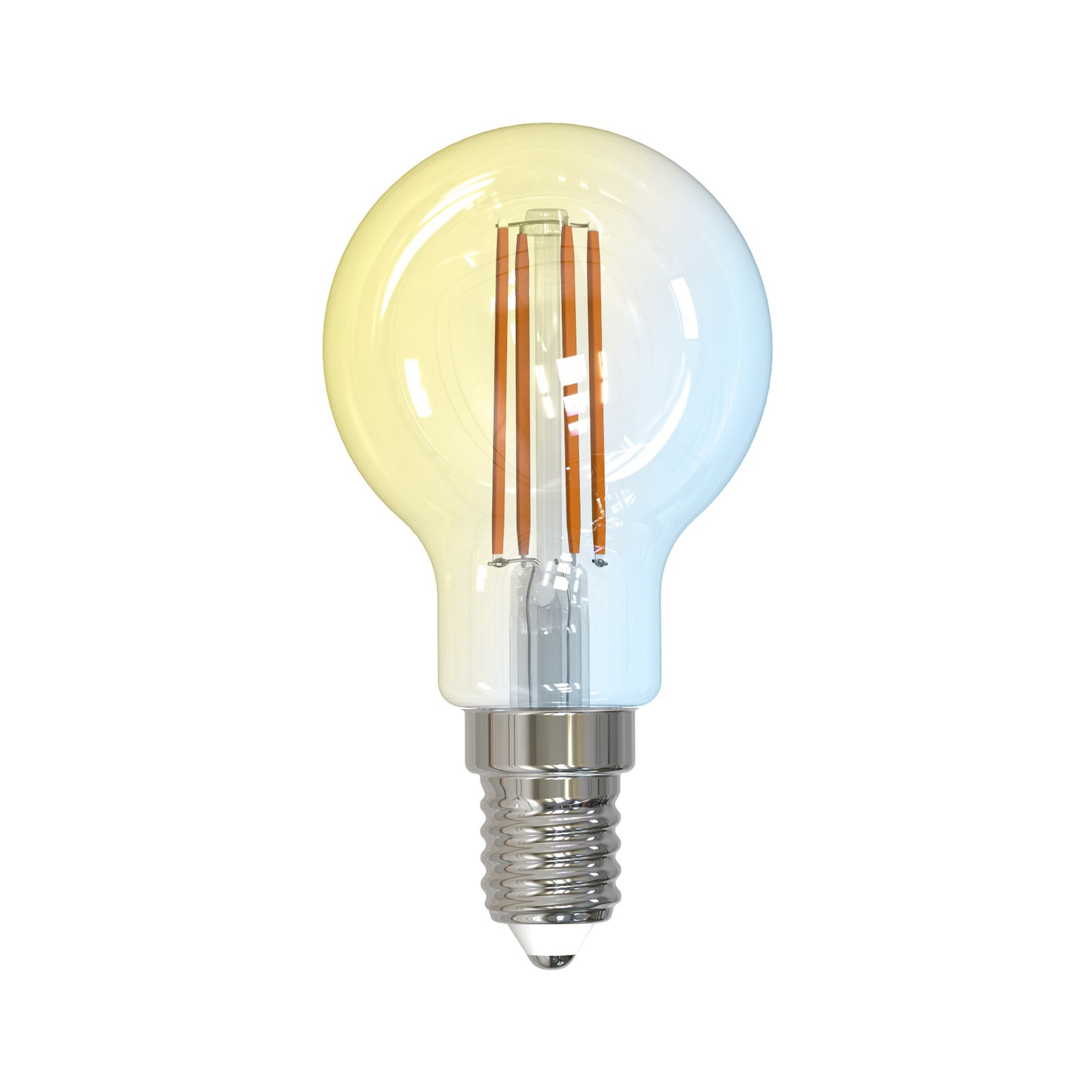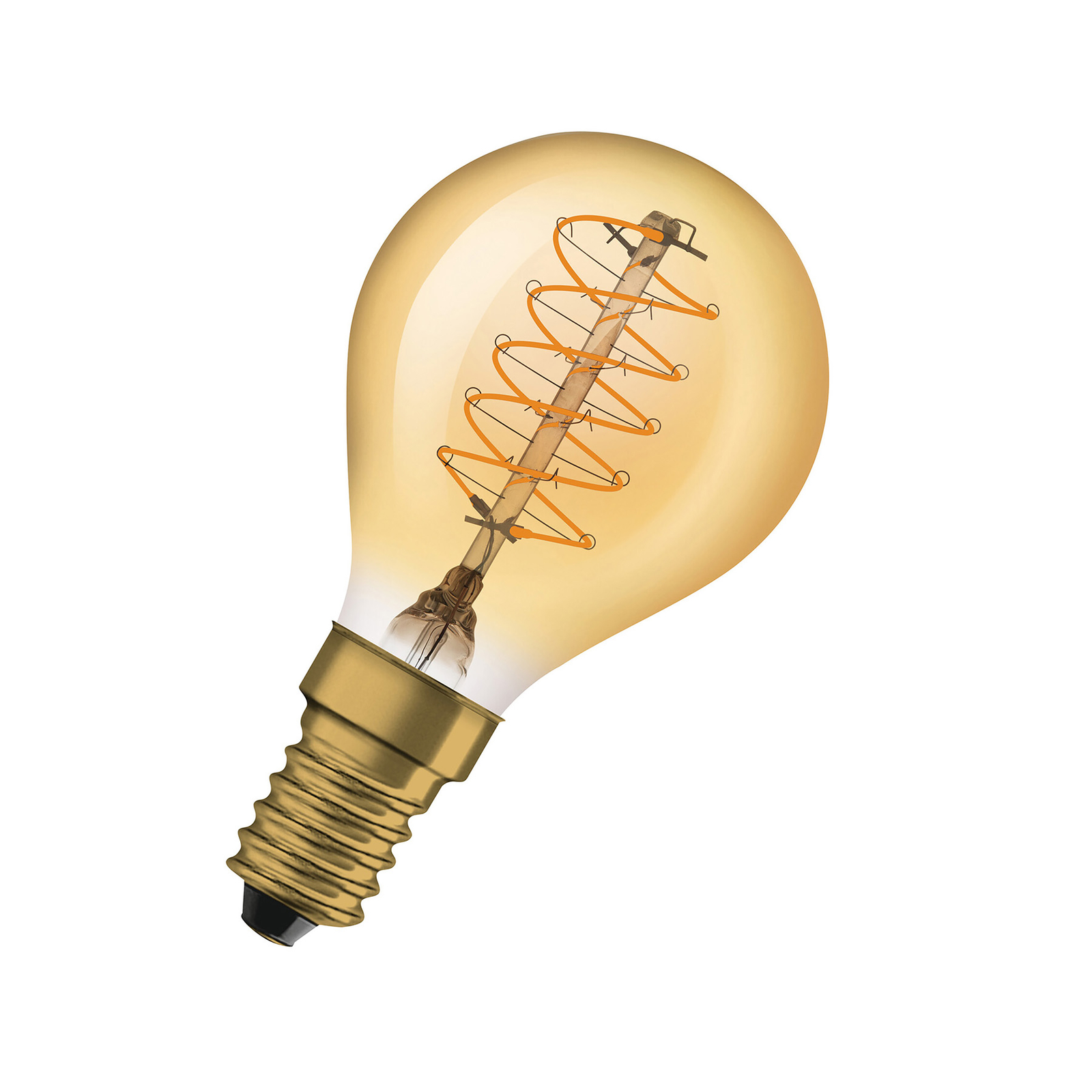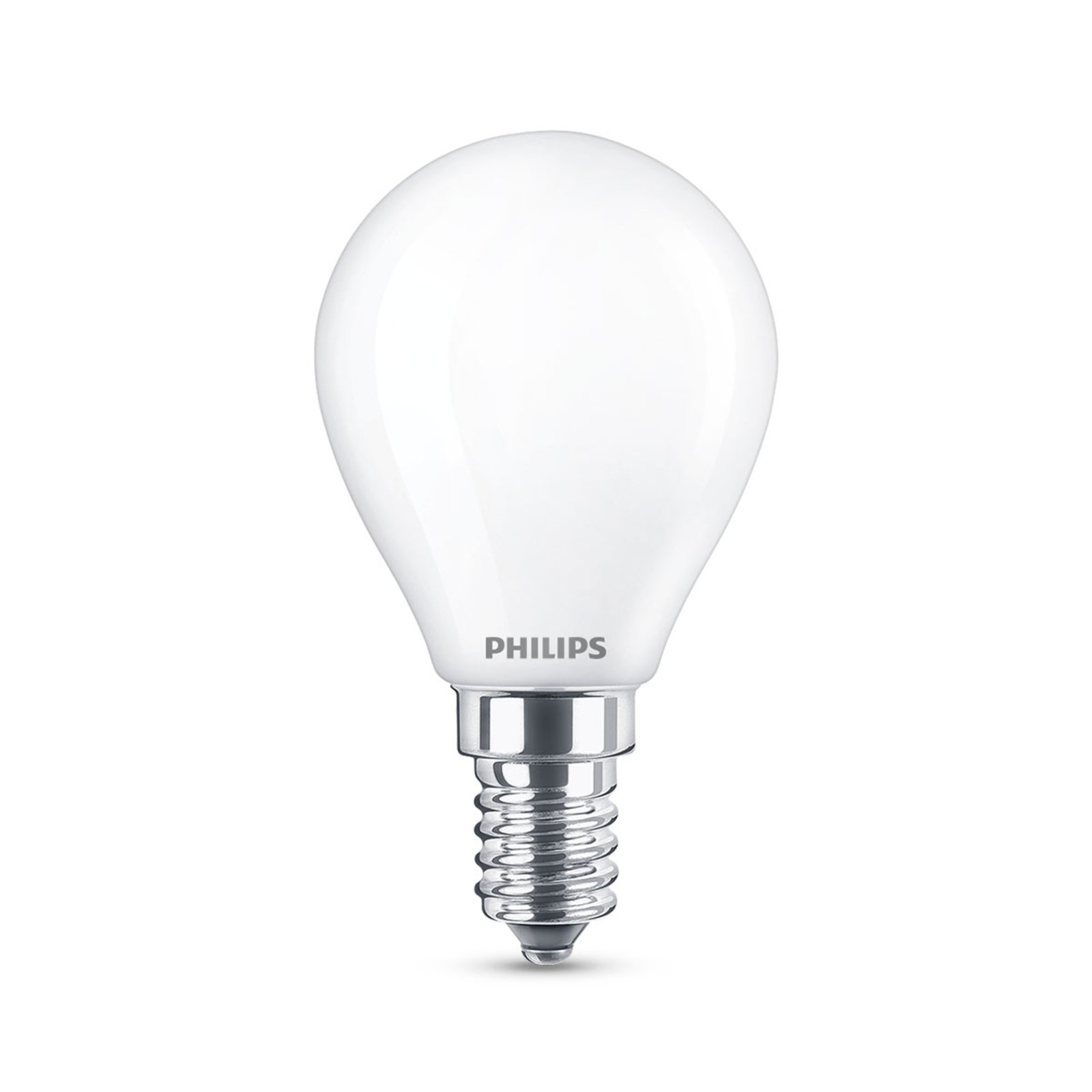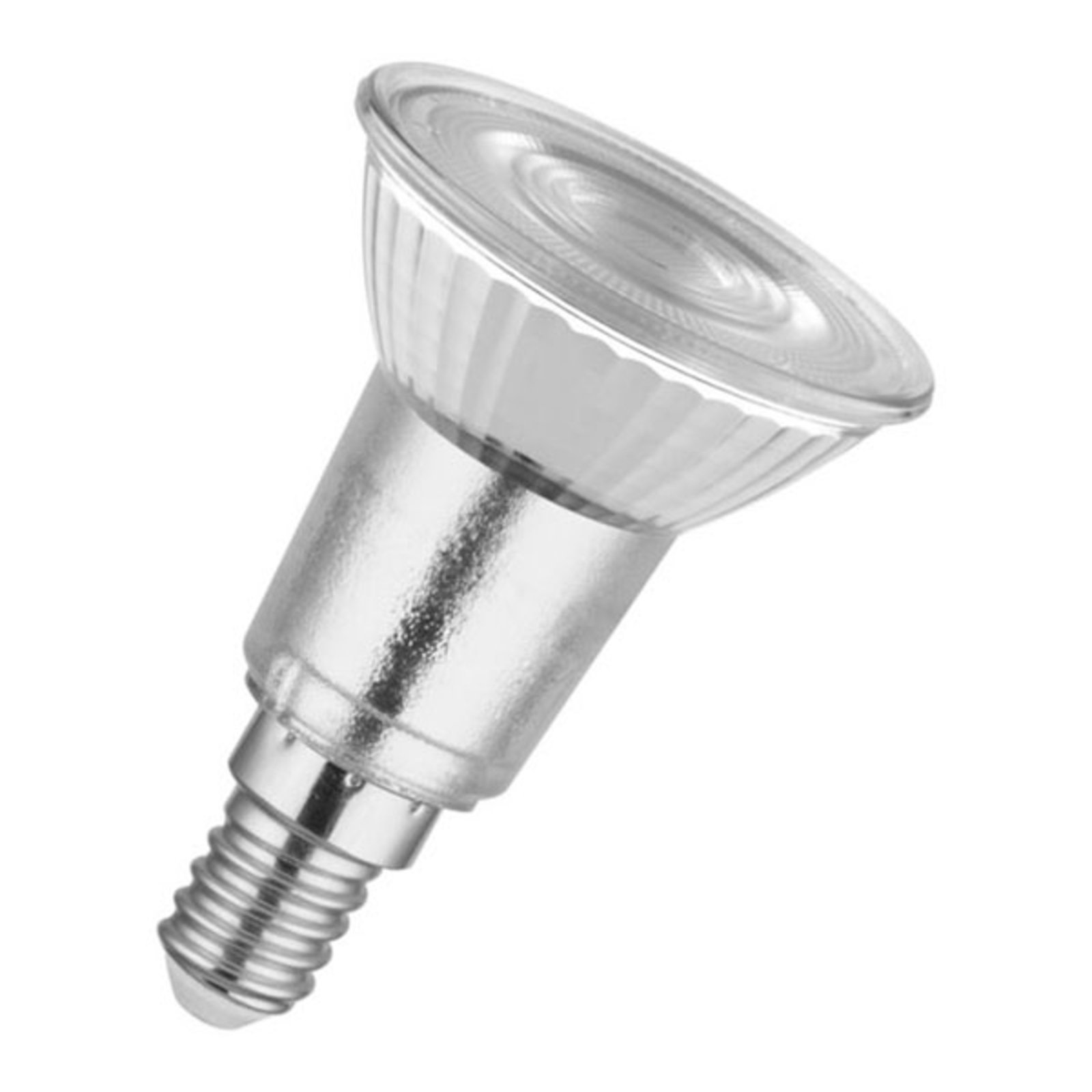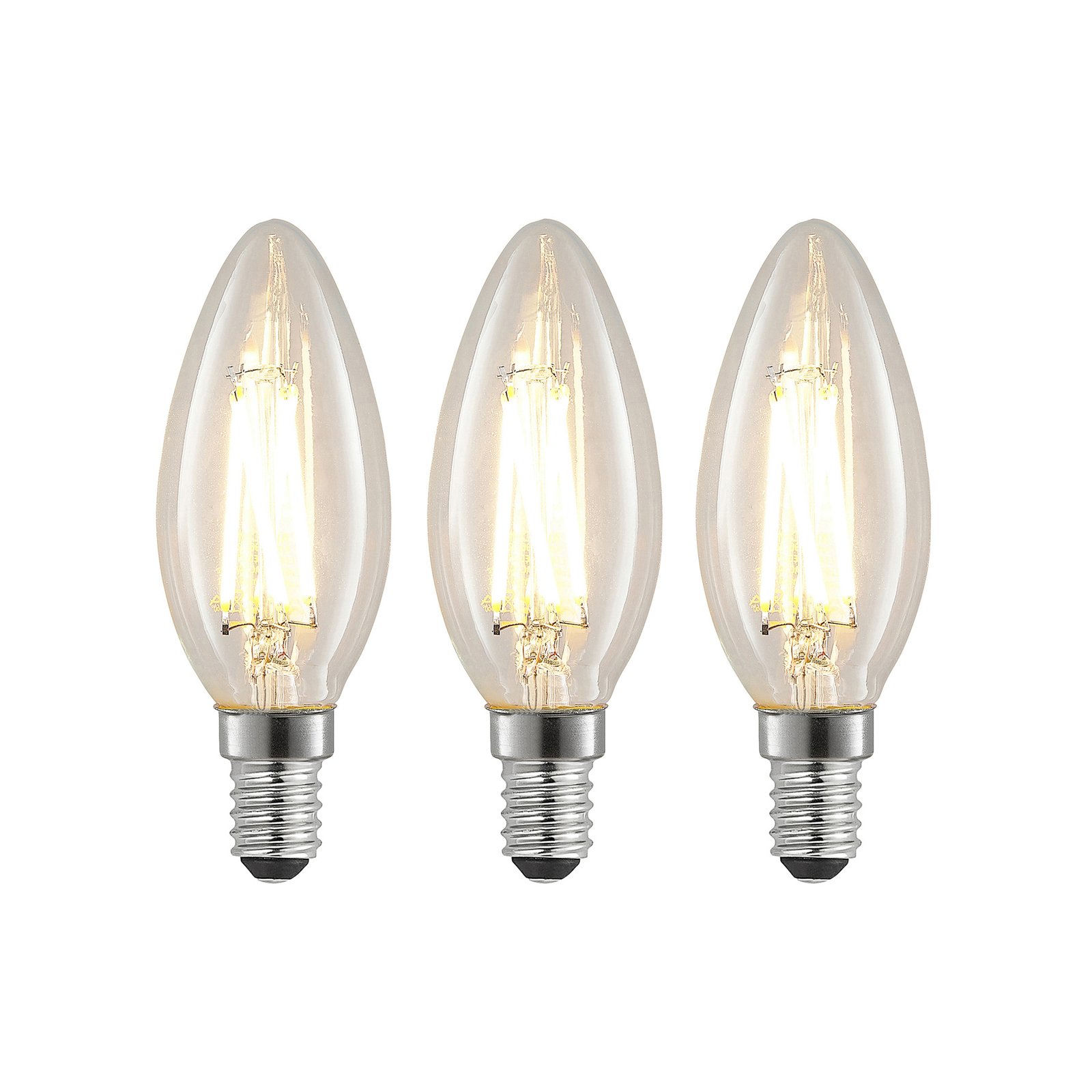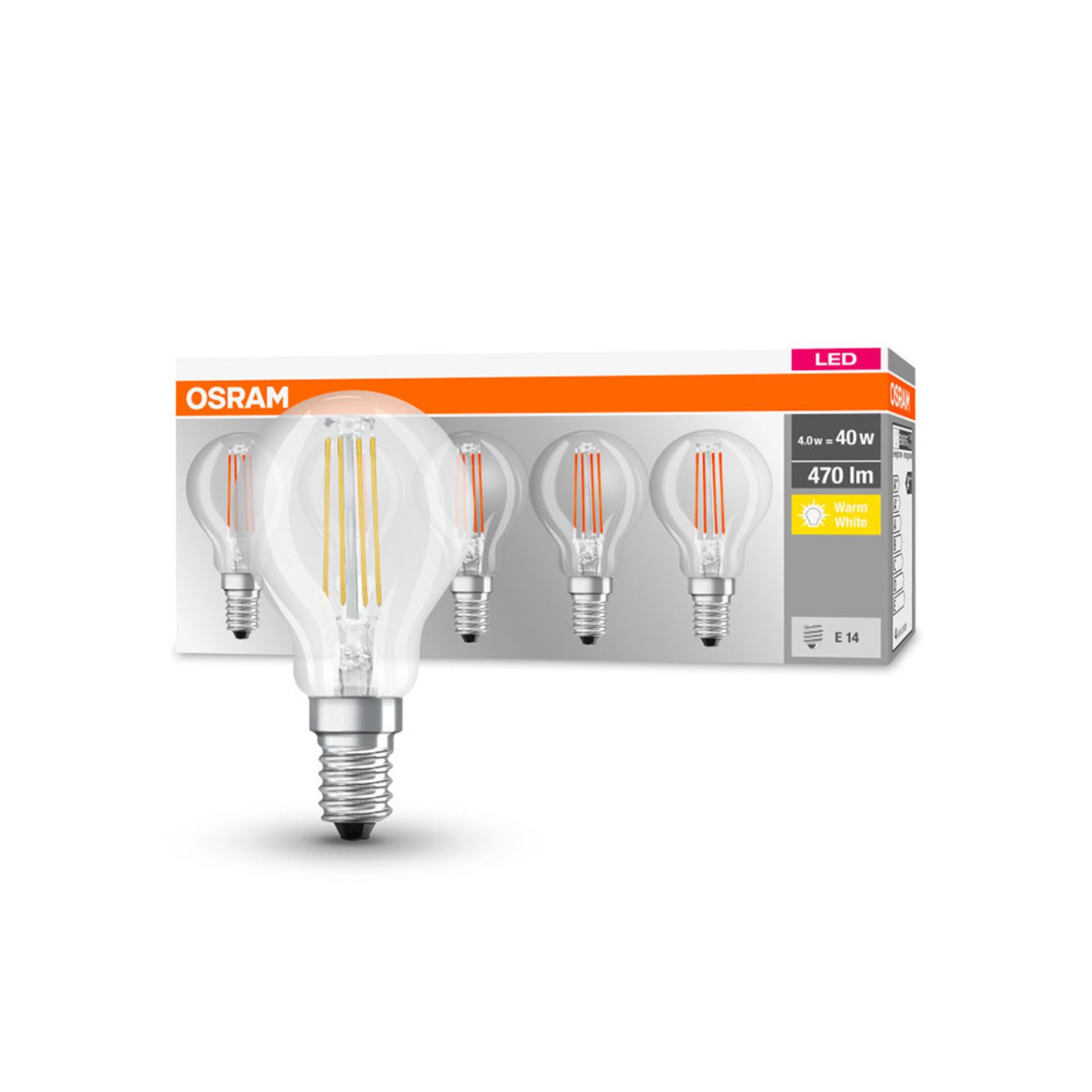- 50 days free returns
- Rated “Excellent” on Trustpilot
- The UK's largest selection of brands
Extra 10% OFF over £89 | Extra 13% OFF over £129
E14 LED: What the new candle bulb can do
E14 LED was (after E27 LED lamps) perhaps the most eagerly awaited light source. The reason: E14 lamps are used in so many living room and work lights that they are indispensable. For example, if you are not considering real candles on your chandelier, you will have to rely on artificial candle lamps. And since incandescent lamps, halogen lamps and even energy-saving lamps are no longer an issue for environmentally and energy-conscious consumers, it was only a matter of time before the E14 base was retrofitted with LEDs.
For you, this means on the one hand that you can illuminate your E14 lights with modern lighting technology. On the other hand, you also get a plus in terms of lighting, e.g. in the direction of Smart Home, where leading brands such as Philips Hue and Ledvance (formerly known as Osram) are already making possible what would previously have looked like magic.
How many watts does my E14 LED lamp need?
For LED light sources with an E14 base, use the lumen value to determine the brightness (as with all other light sources beyond the incandescent lamp).
Of course, there is still a watt specification. However, this only stands for the consumption of a lamp and is not in any (even) relation to the brightness (lumen). It was different with incandescent lamps: a 25-watt bulb always had around 200 lumens, 40 watts corresponded to around 400, 60 watts to around 700 and you could expect over 1,300 lumens from a 100-watt lamp.
When buying a new E14 LED lamp, use these values or the comparative value, which you will find for each light source in the shop and on the packaging, as a guide.
:format(jpeg))
:format(jpeg))
Why is my E14 LED bulb humming?
If you notice a humming noise when operating your E14 LED lamps and you are using a dimmer, you should switch off the light immediately. This is because it is most likely an operating error.
Either you are using an unsuitable dimmer or a non-dimmable E14 LED lamp. Because you need to know that not every E14 LED is dimmable. And if it is, then it is by no means the same with every dimmer.
You can find out first-hand from our specialist consultants which combinations of light source and dimmer are suitable. You will find the contact details below.
:format(jpeg))
Can E14 LED lamps be dimmed without an external dimmer?
If you don't want to bother with external dimmers, you don't have to do without cosy, dimmed lighting! There are E14 LED lamps for this purpose, where the dimming technology is integrated into the light source.
Once screwed in, the E14 LEDs can then be dimmed via the normal light switch by pressing it several times. We recommend SceneSwitch light sources from Philips or EasyDim E14 LED light sources, for example.
Cosy lighting moods are so easy today!
What beam angles are available?
If it is not a filament lamp that radiates almost all round, i.e. 360°, you may need to pay attention to the beam angle when buying an E14 LED lamp. Different beam angles are used for different applications:
- narrow beam: targeted spots, e.g. on images
- medium wide distribution: separate islands of light, e.g. reading chair
- wide beam: comprehensive general lighting, e.g. in the living room
Incidentally, the further away the light source is from the object, the larger the circle of light on the surface. However, the closer the light source is to the object, the smaller the circle of light becomes. This is interesting, for example, when using E14 LED light sources in height-adjustable pendant luminaires.
What light colour do E14 LEDs have?
When buying an "ordinary" E14 LED lamp, you should always take a look at the light colour\ specification in the shop. This reveals the colour temperature of the light. Depending on the colour temperature, the light can be suitable for different living or working areas. Even more options are offered by smart home lamps with adjustable colour temperature and RGB colours. Easily control the colour temperature with E14 bulbs from Philips Hue.
A rough distinction is made between three light colours:
- Less than 3,300 Kelvin: warm white like an incandescent lamp - perfect for cosy rooms
- 3,300 to 5,300 Kelvin: universal white, i.e. whiter instead of reddish - perfect for work areas
- more than 5,300 Kelvin: daylight, very bluish - perfect for utility rooms or cellars
What shapes are E14 LEDs available in?
Just as a reflector lamp makes little sense in a chandelier, a wind gust lamp makes little sense in a closed ceiling light. However, both are theoretically possible, as both types of bulb can have an E14 base. E14 LEDs are available ...
- in candle shape with matt bulb, e.g. for hanging lamps
- in gust of wind look, e.g. for chandeliers
- in filament look, e.g. for all open luminaires
- in drop shape, e.g. for table lamps
- in bulb form, e.g. for ceiling lights
- in tubular form, e.g. for poinsettias
- with reflector, e.g. for ceiling spotlights
LED lamps combine modern lighting technology with a nostalgia factor. Or the desire to be able to screw in a visually attractive light source after the light bulb. And not to diminish the beauty of a chandelier with energy-saving spirals, for example.
:format(jpeg))
:format(jpeg))
:format(jpeg))
Are E14 LED lamps suitable for luminaires with motion detectors?
There is no better light source than LED lamps for luminaires with motion detectors! This is because E14 LED light sources have a high switching resistance. Frequent switching on and off, as happens automatically with sensor lights, reduces the service life considerably. In addition, LED lamps provide 100 % brightness as soon as they are switched on. This puts them far ahead of energy-saving lamps (which all have a start-up time) in the truest sense of the word.
:format(jpeg))
Are there also E14 LED light bulbs with remote control?
They are available with remote control or with smartphone control via app. Regular functions for both include, for example
- Dimming the brightness
- Changing the colour temperature
- Setting an RGB colour or RGB colour change
- Timer functions
- Various preset effects
The smarter the light source, the more extensive the possibilities. In the smart home, E14 LEDs are used, among other things, for presence simulation on holiday or automatic lighting routines that are precisely adapted to your daily rhythm.
The strike-through prices correspond to the manufacturer's RRP.
All prices include 20% VAT, delivery costs excluded.















